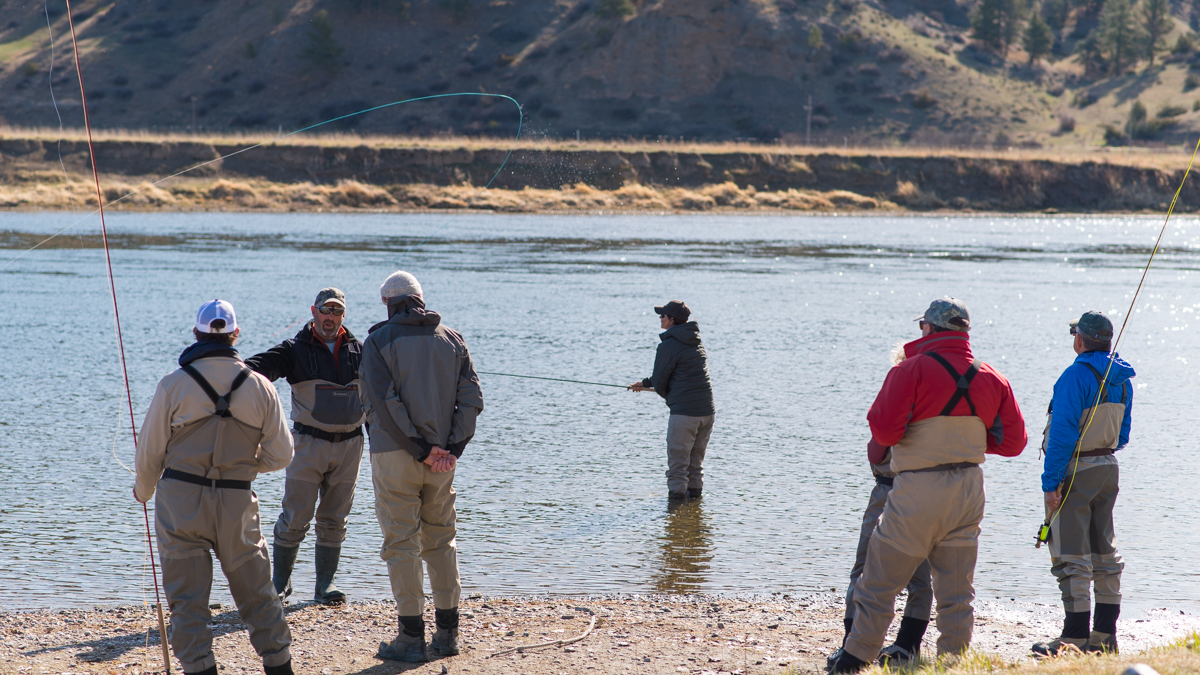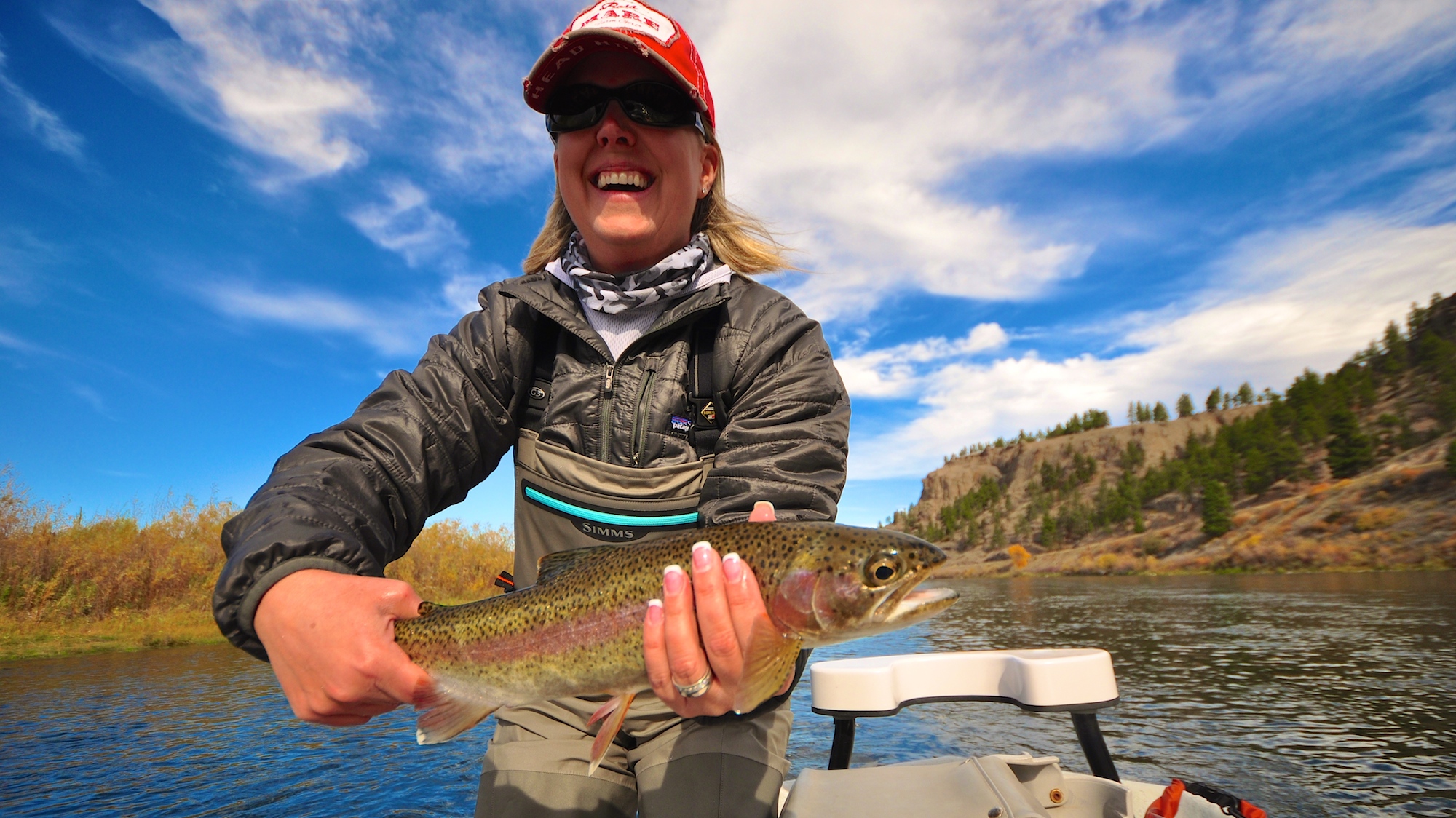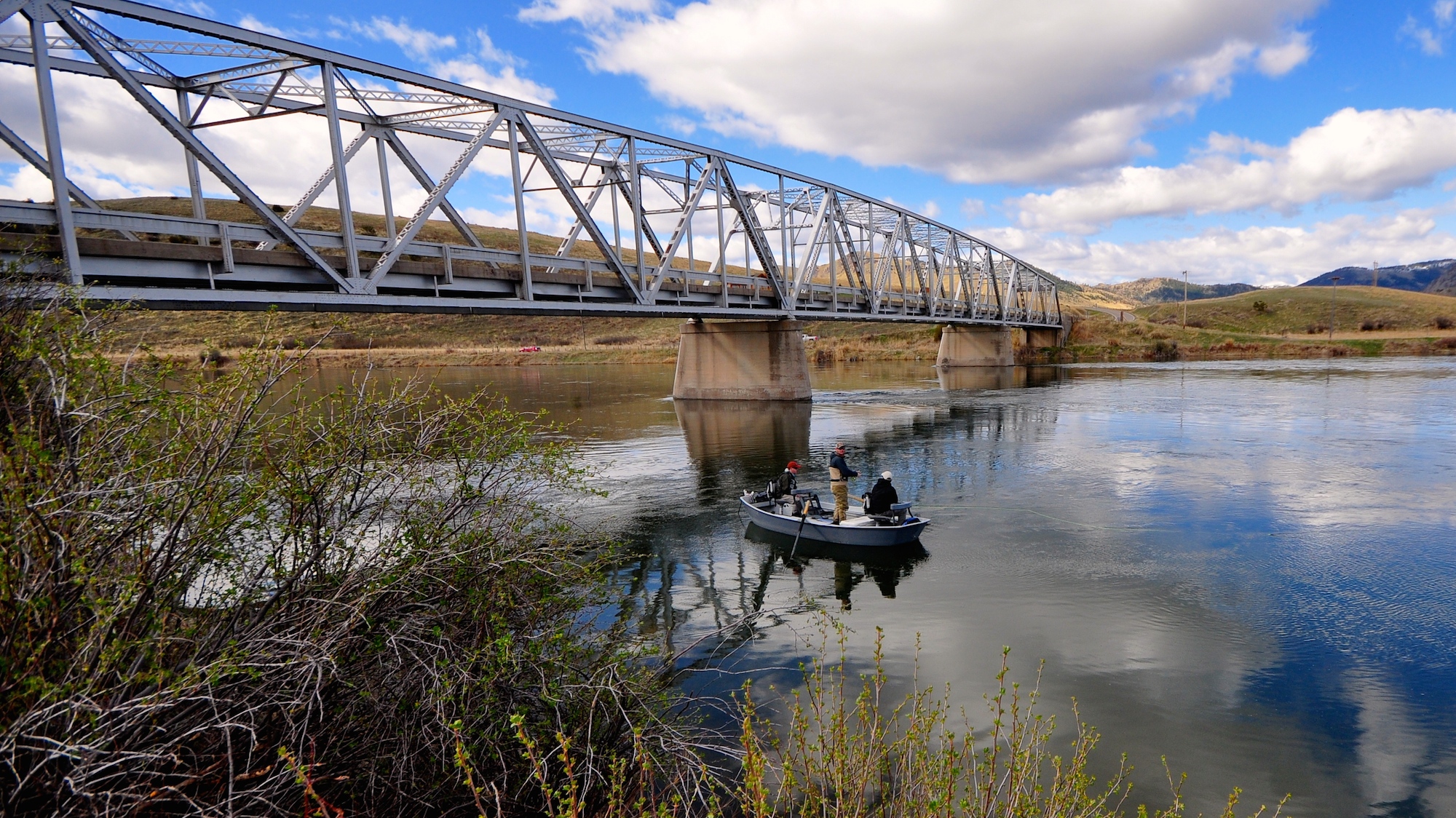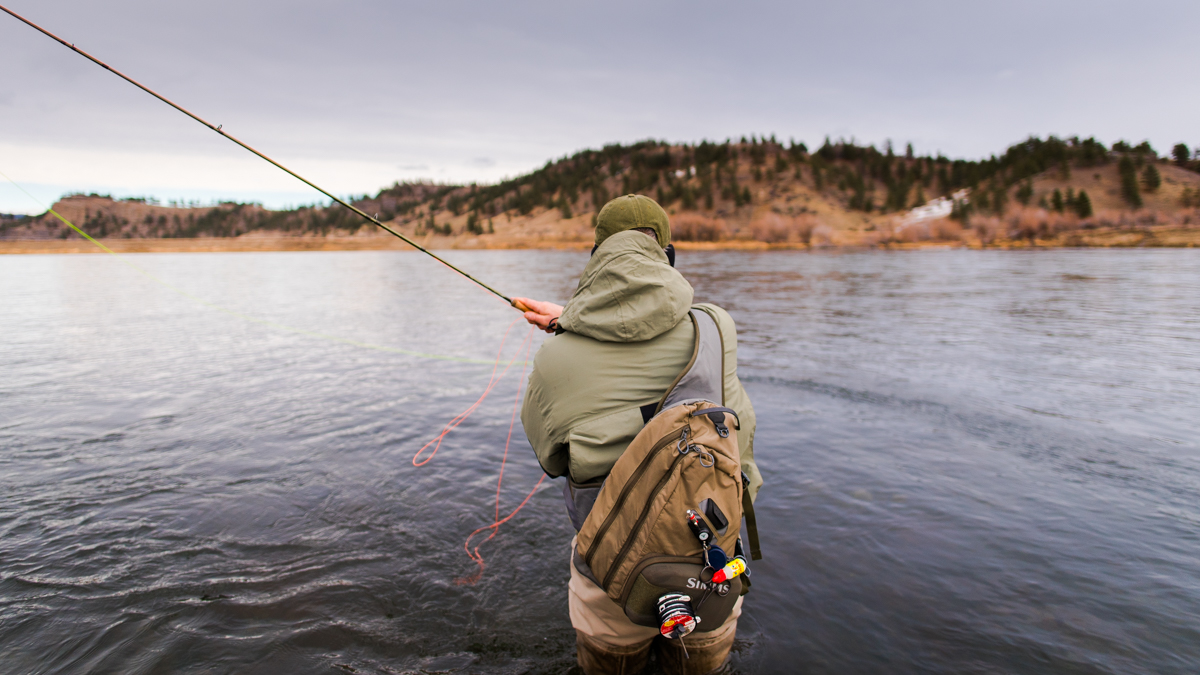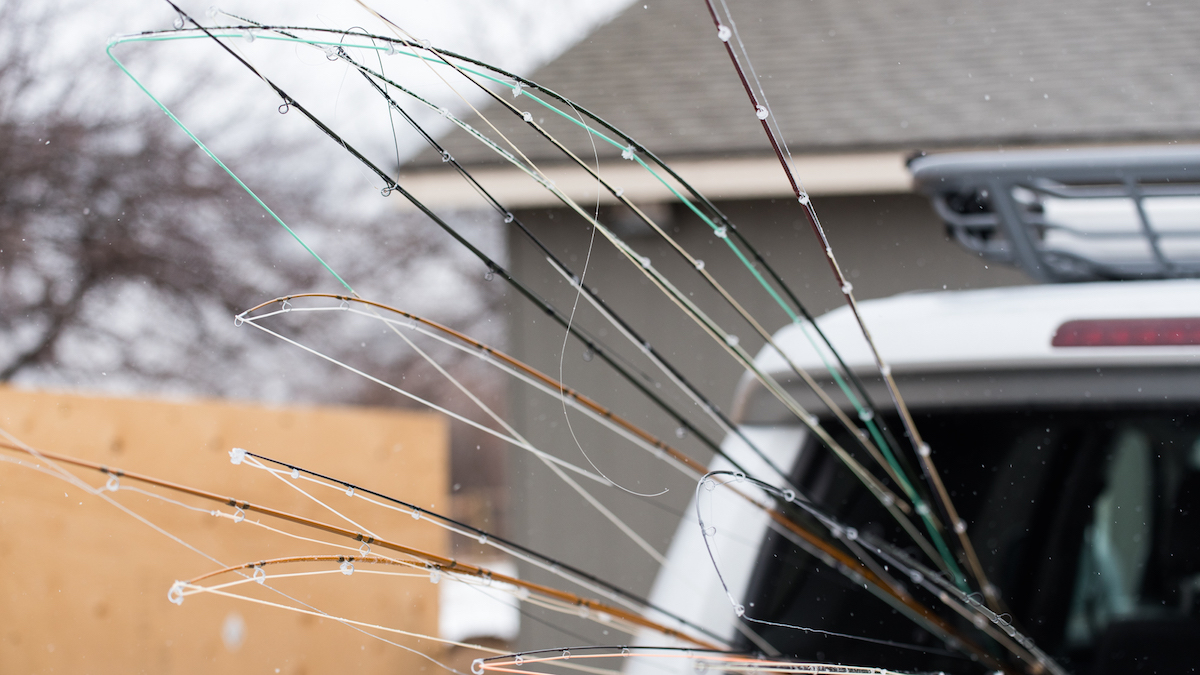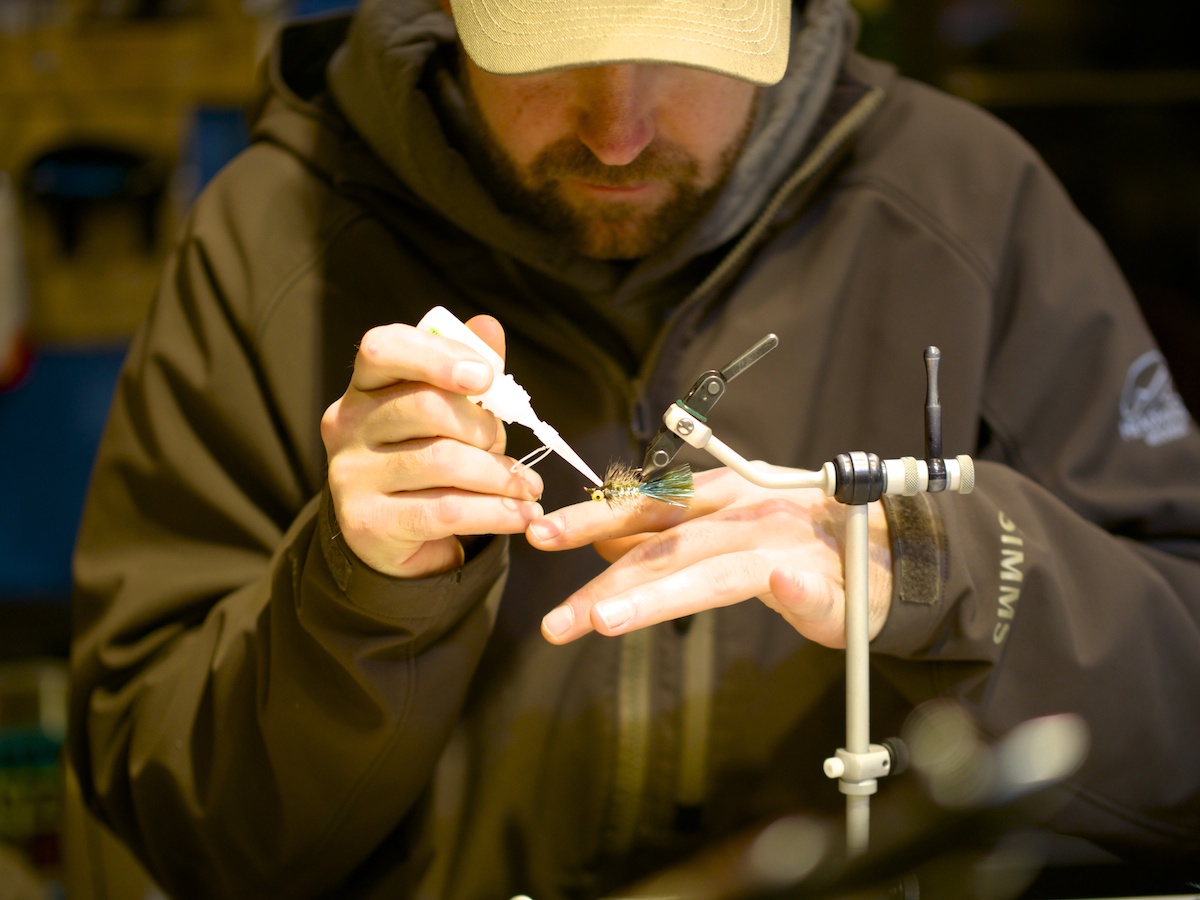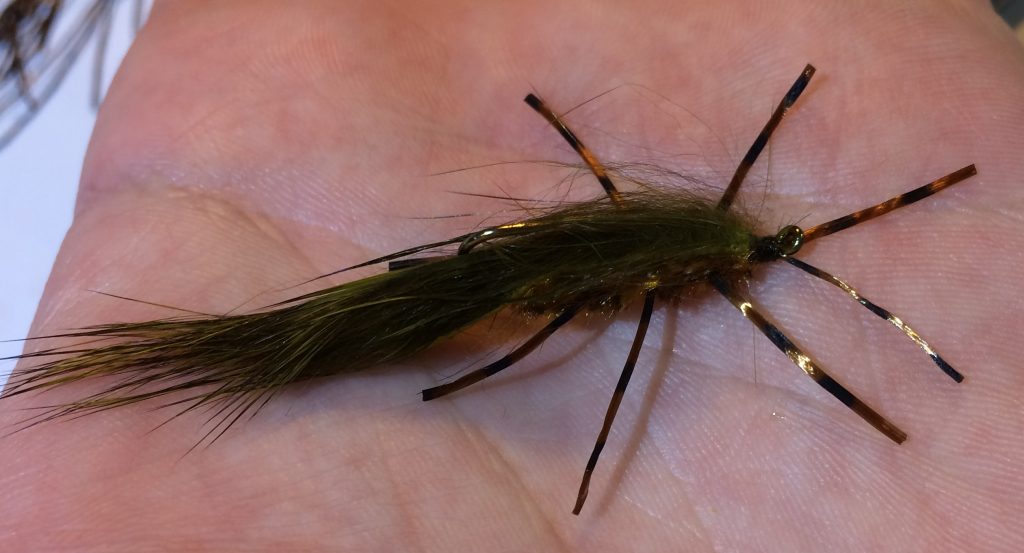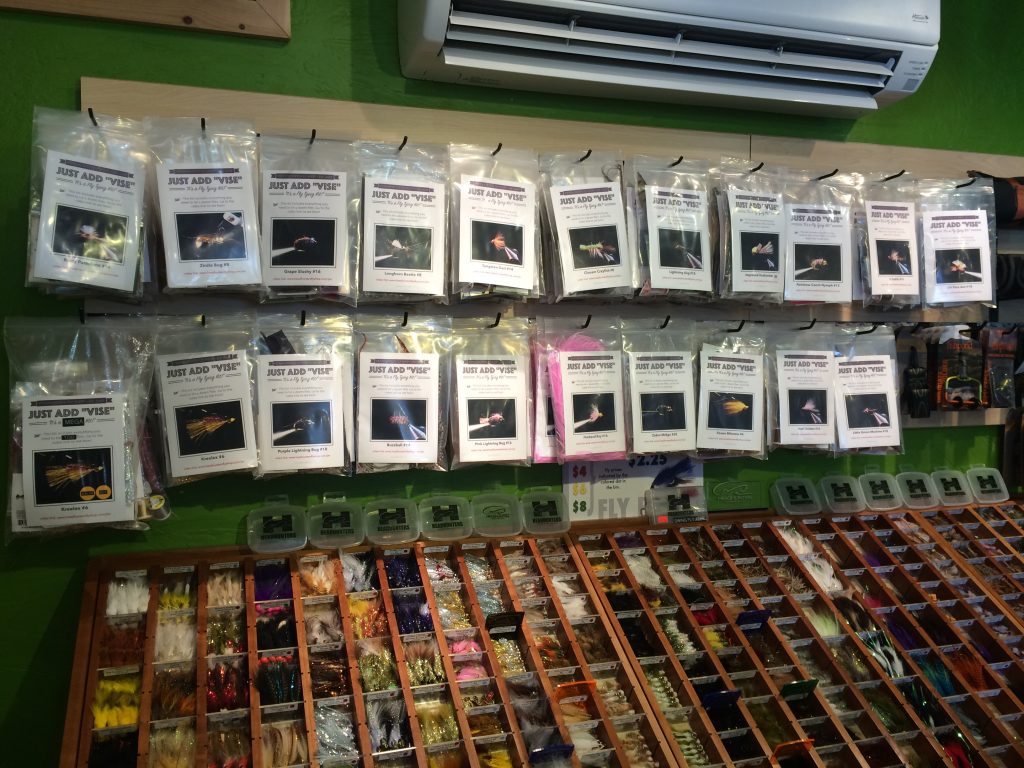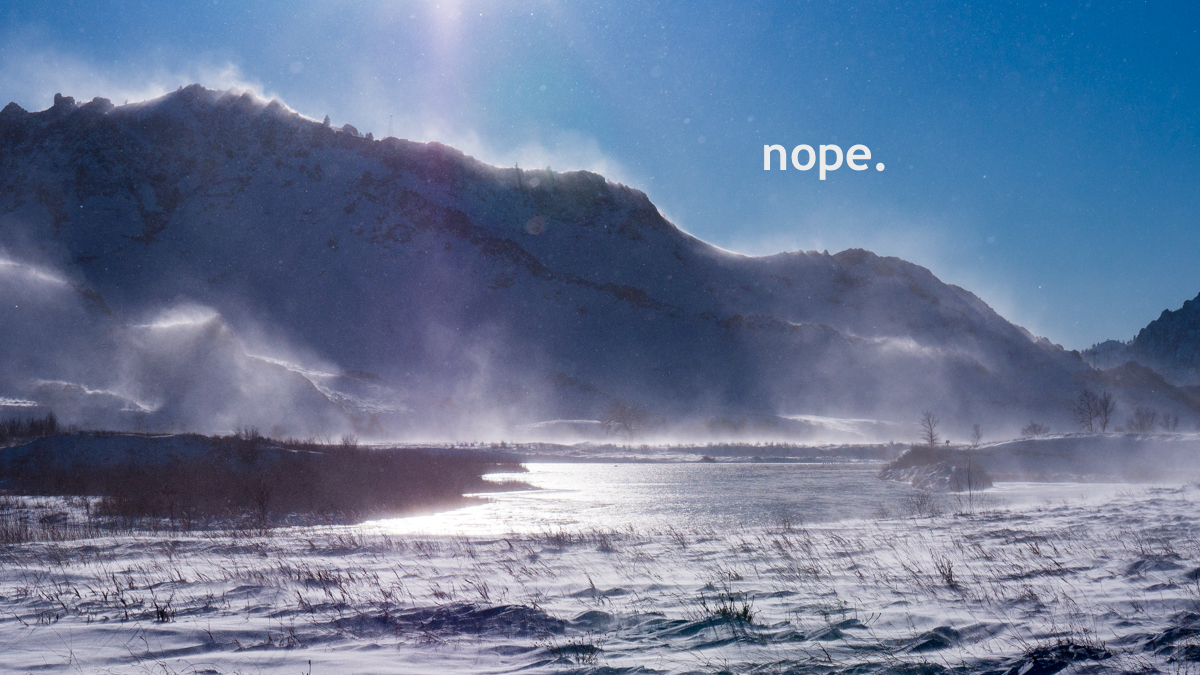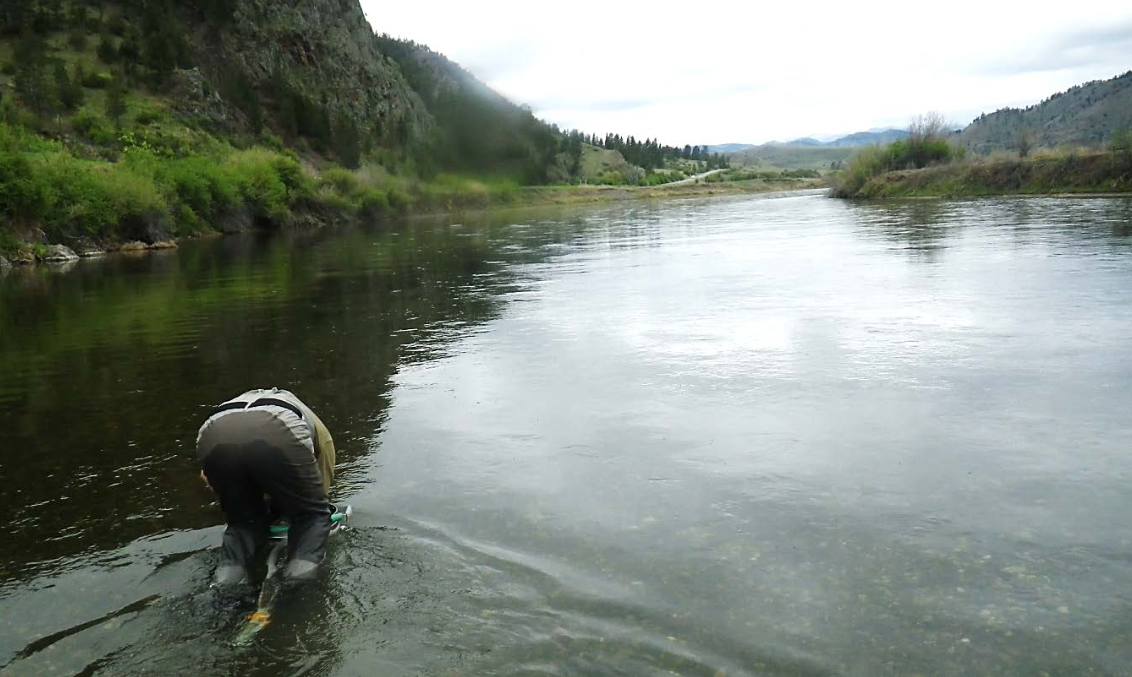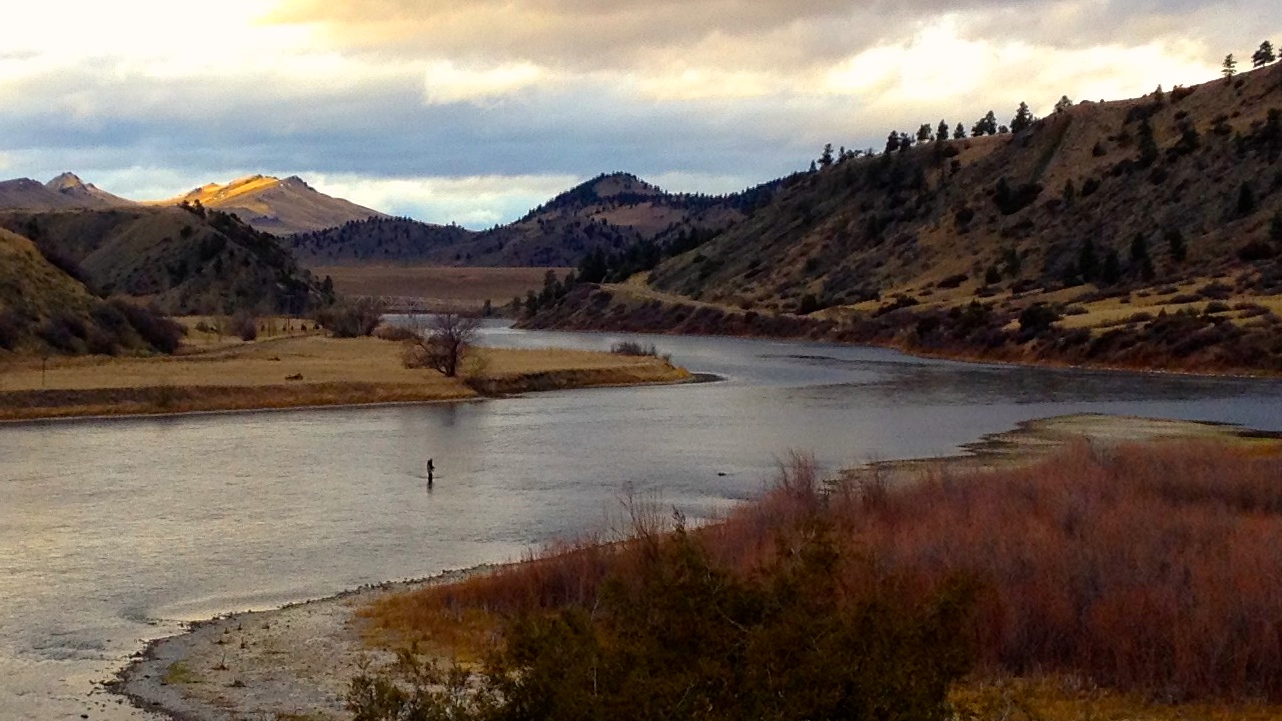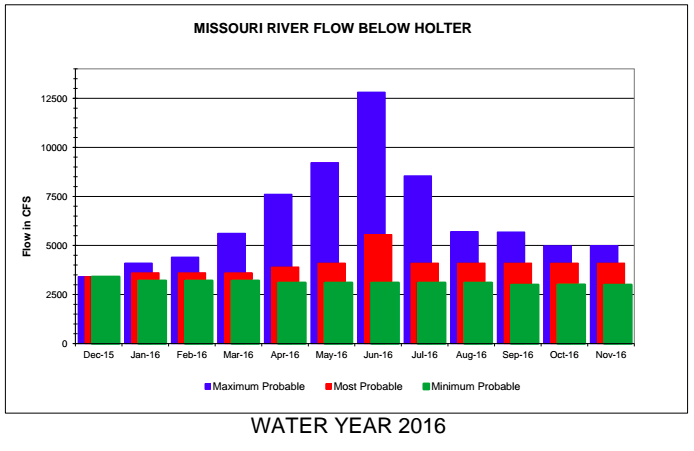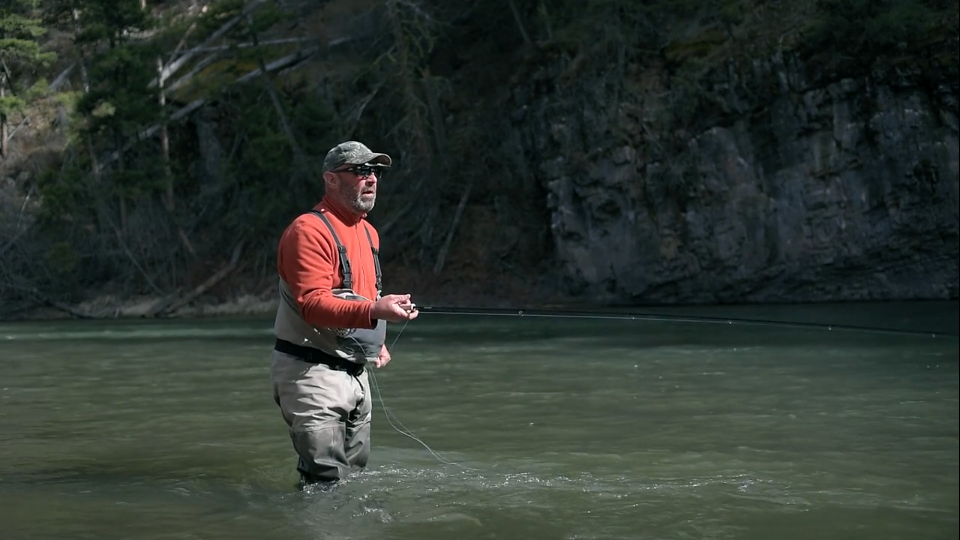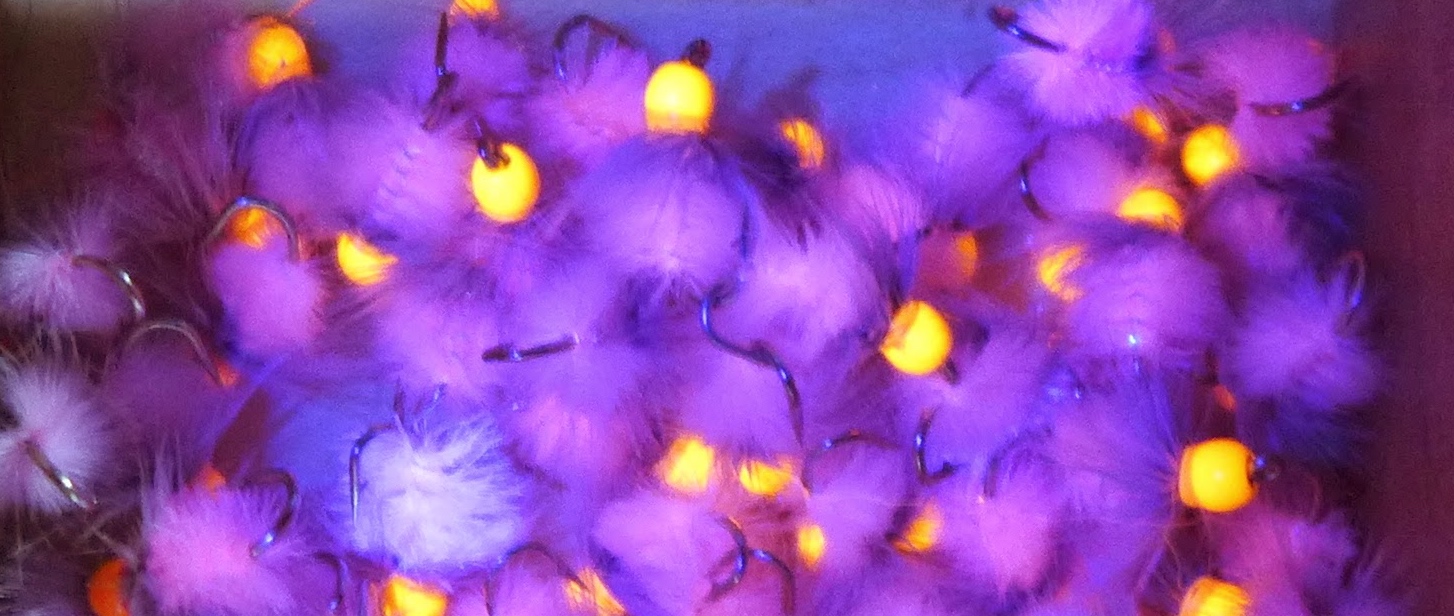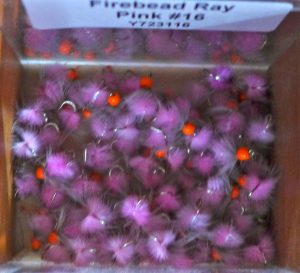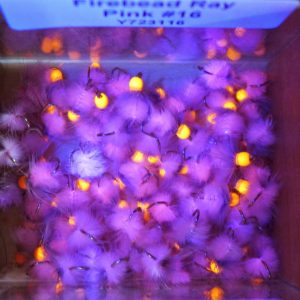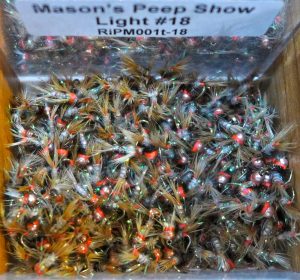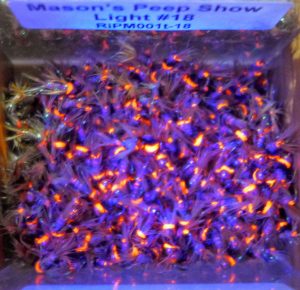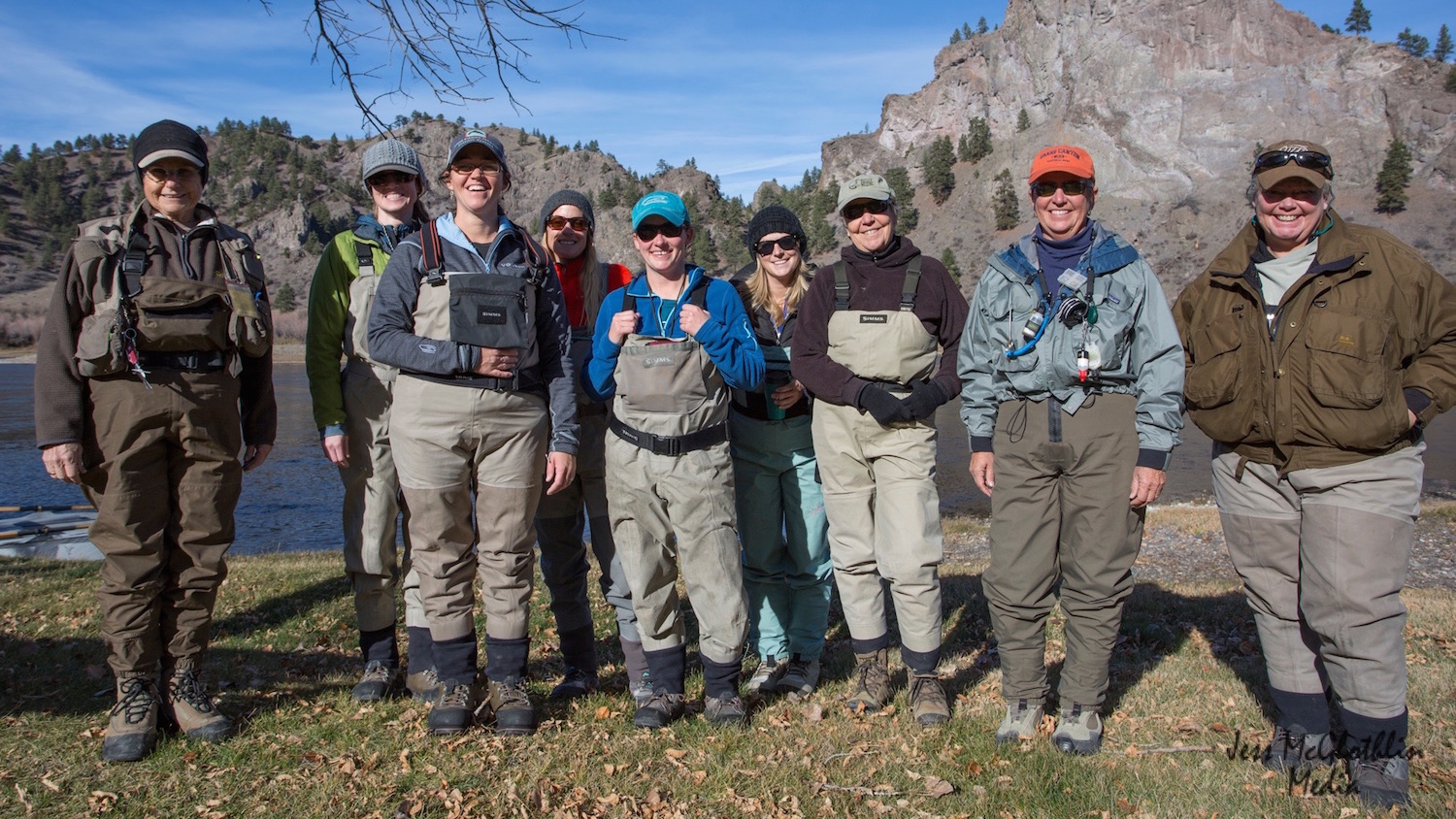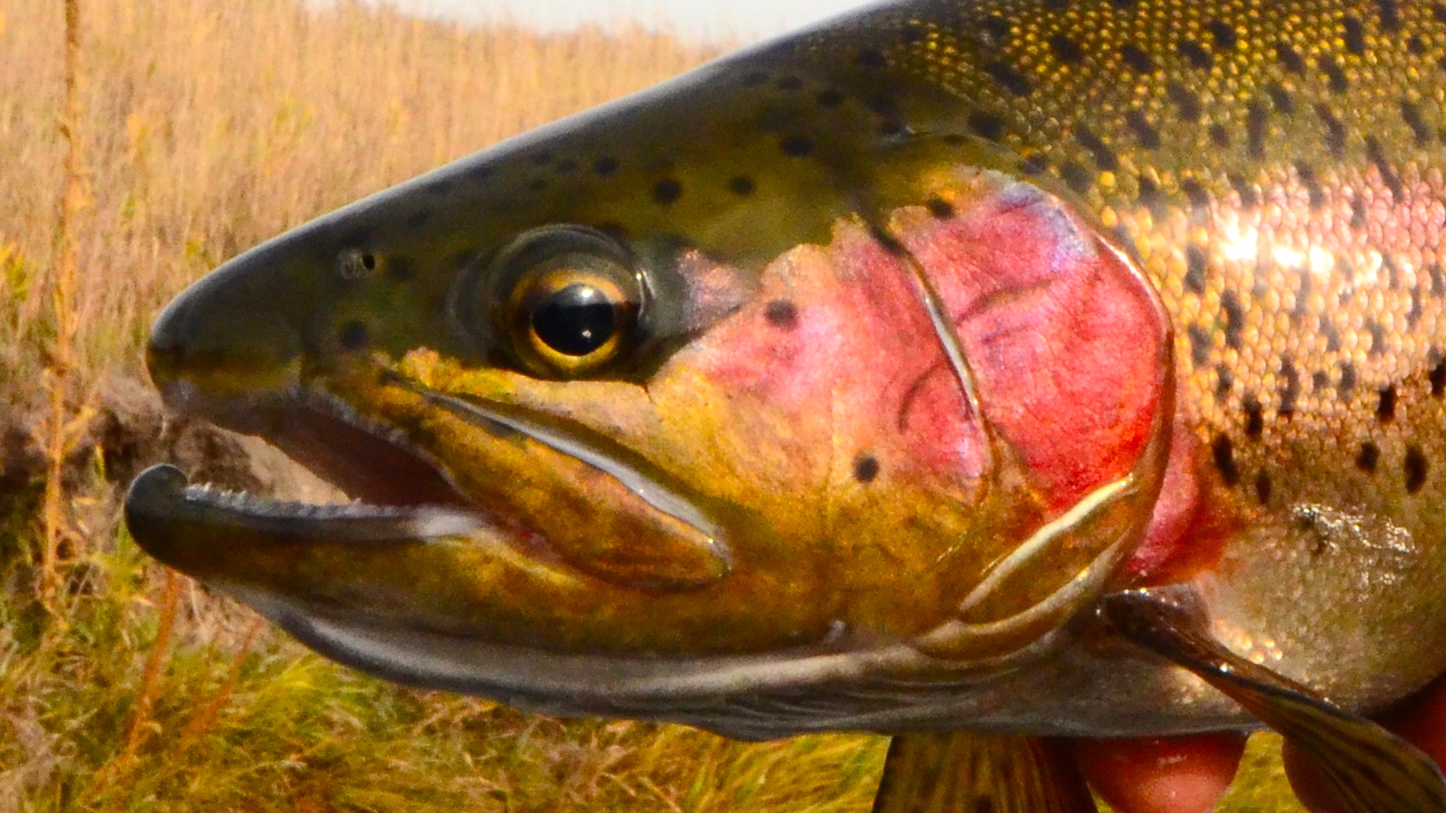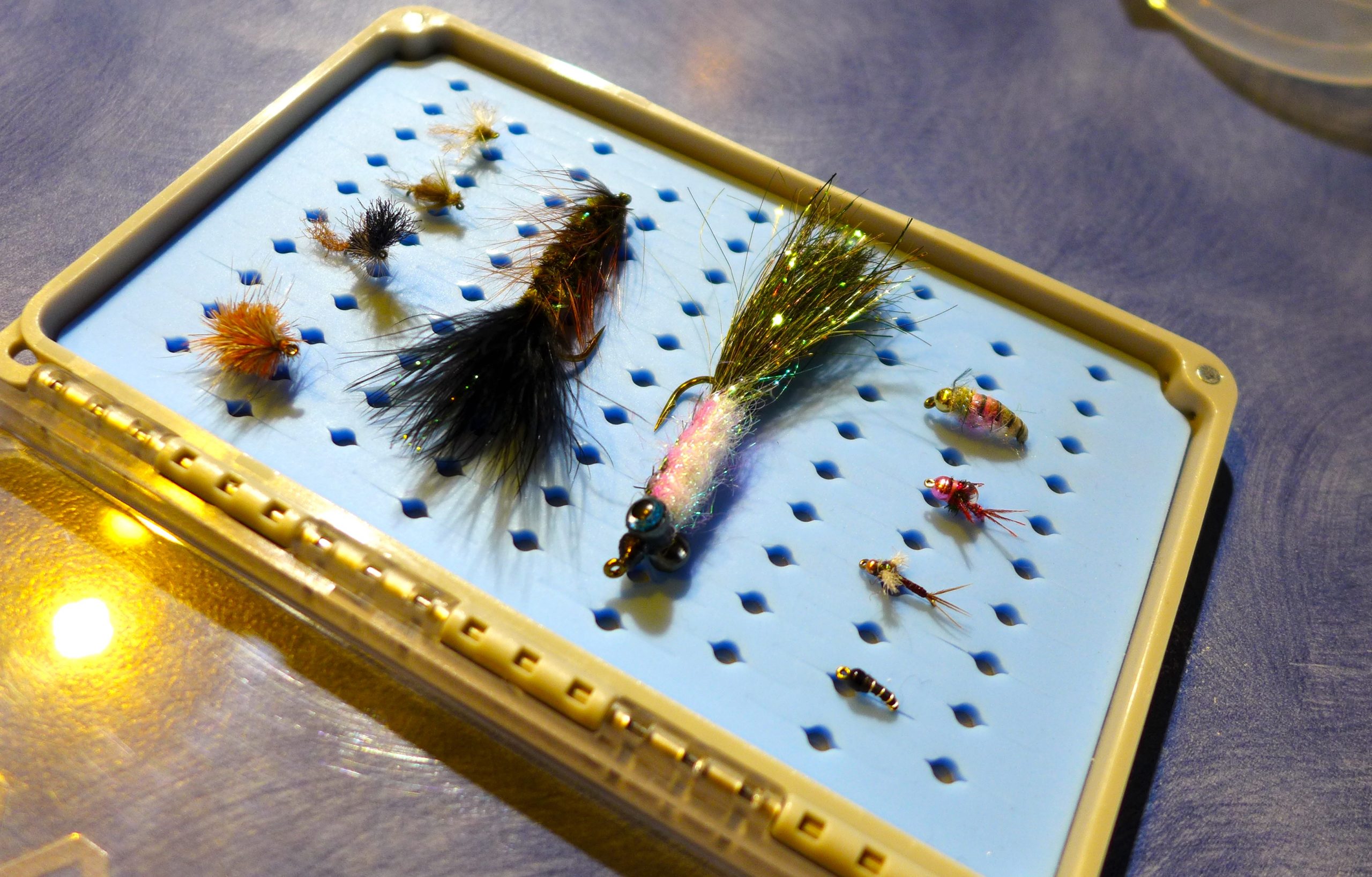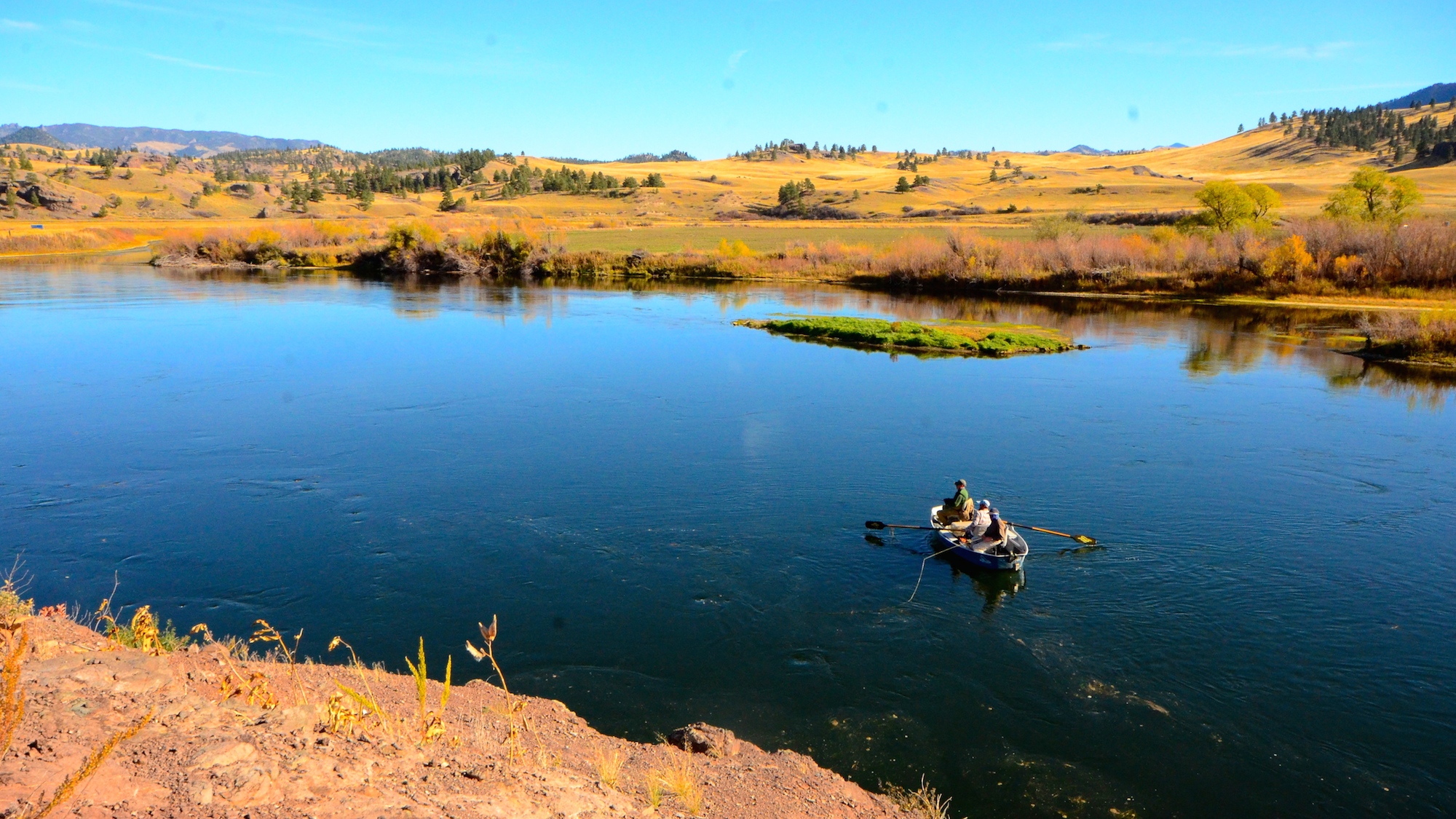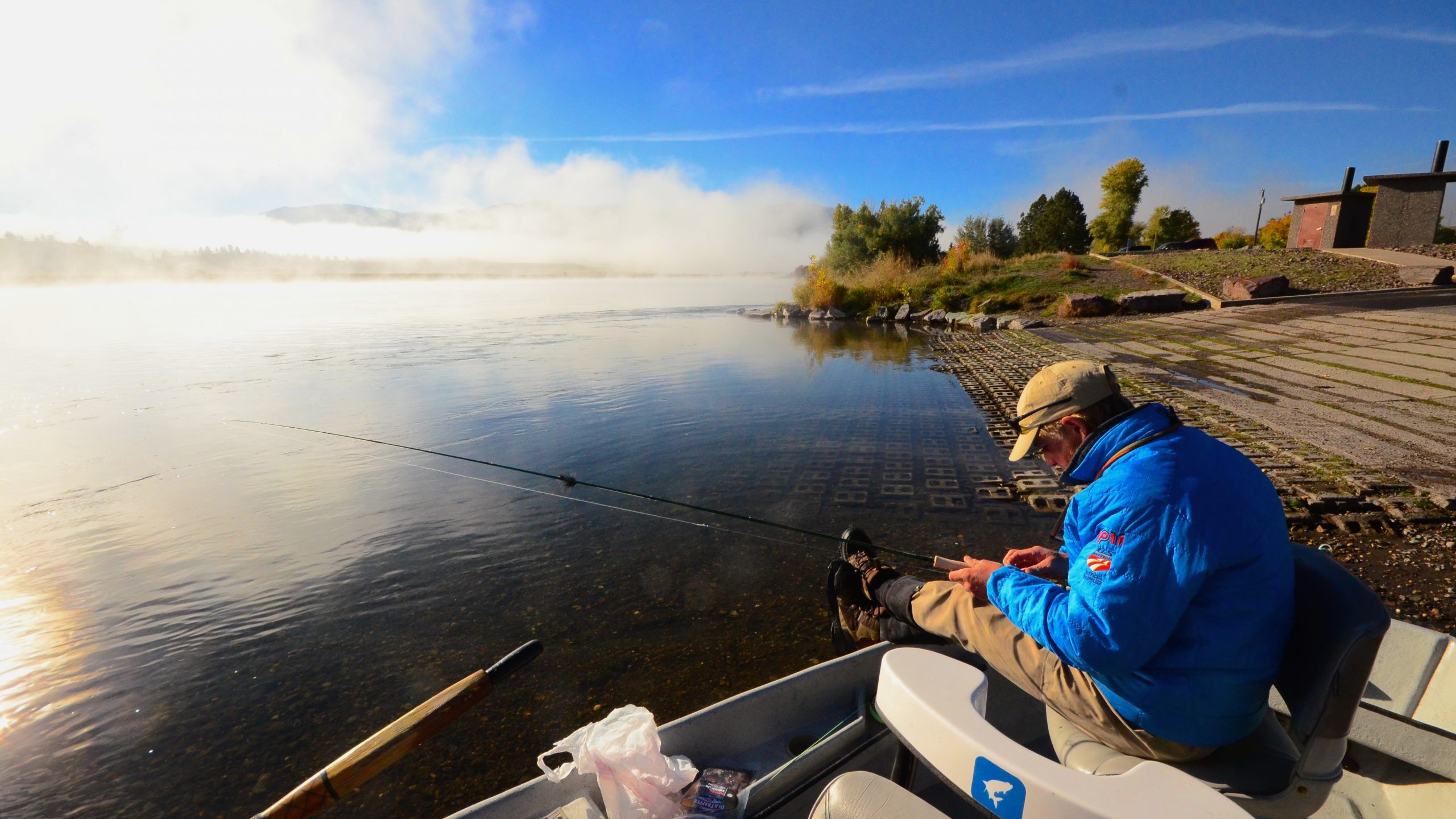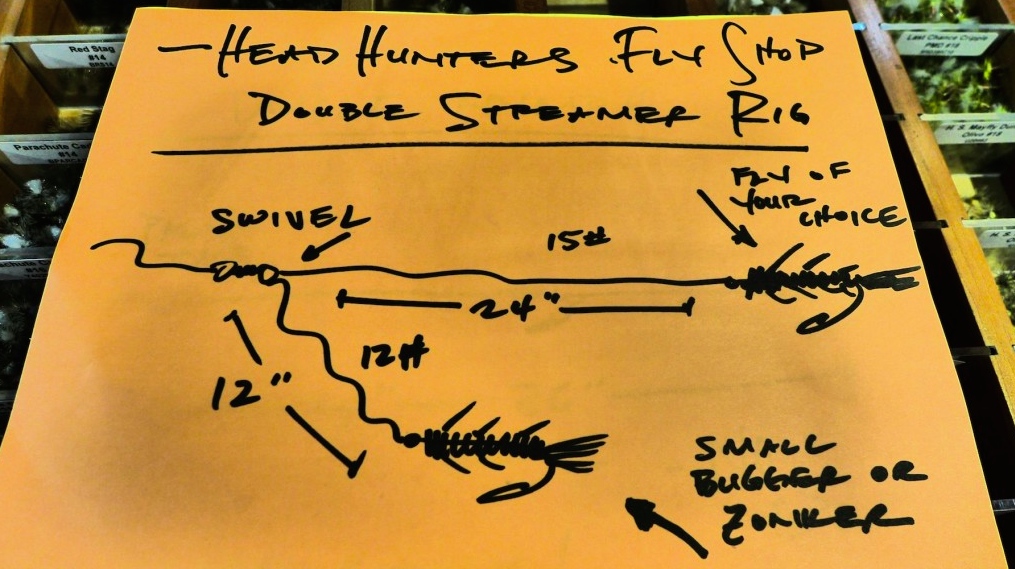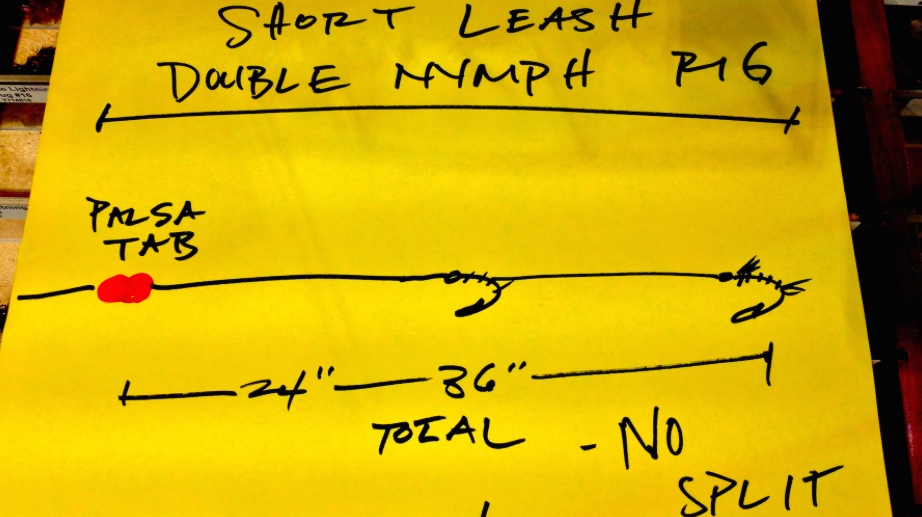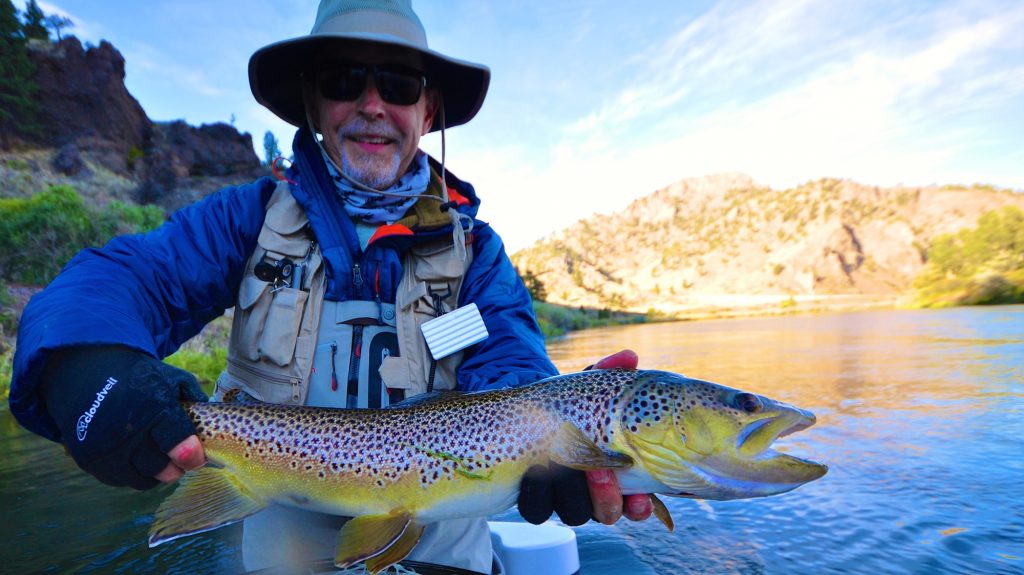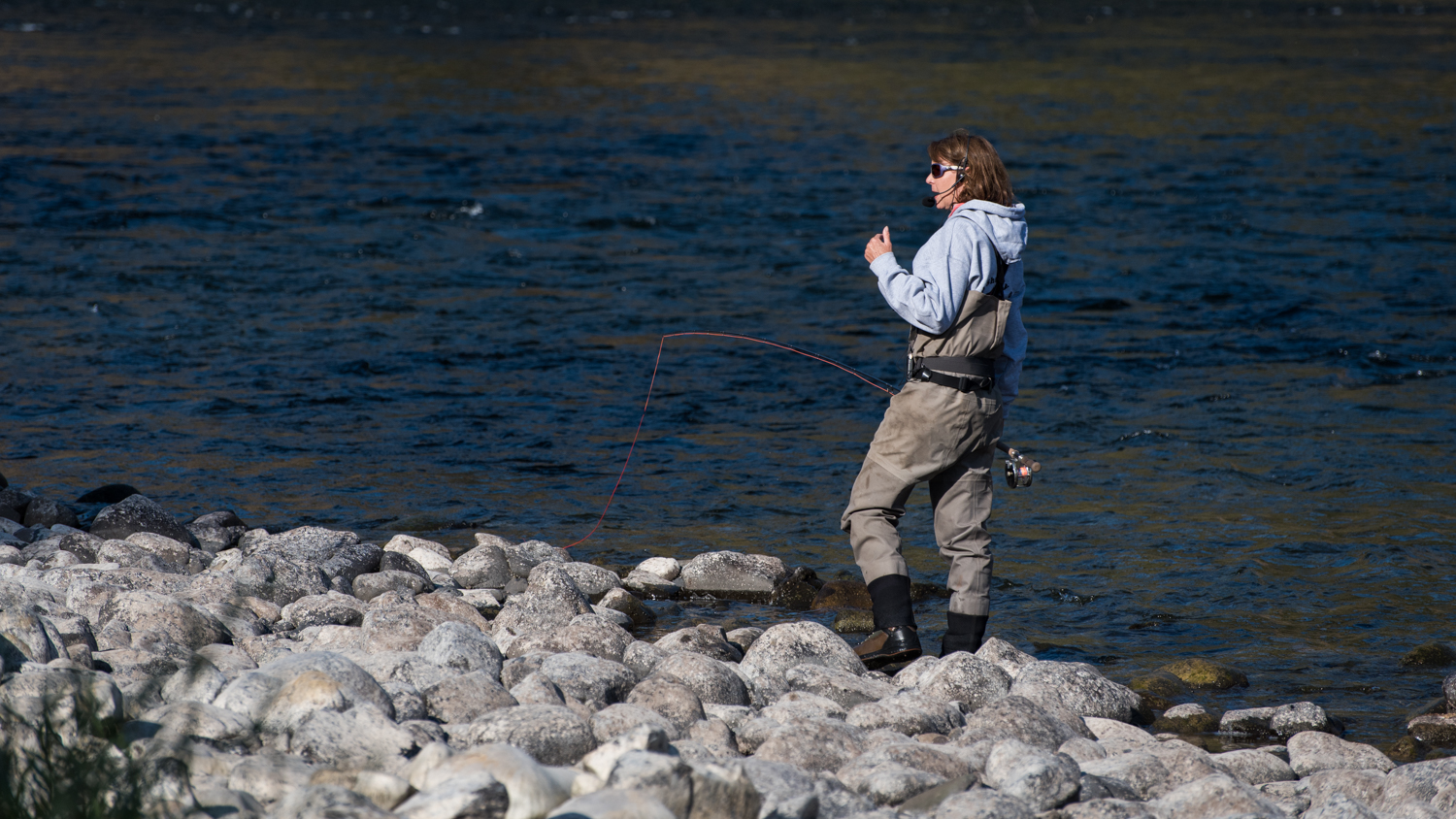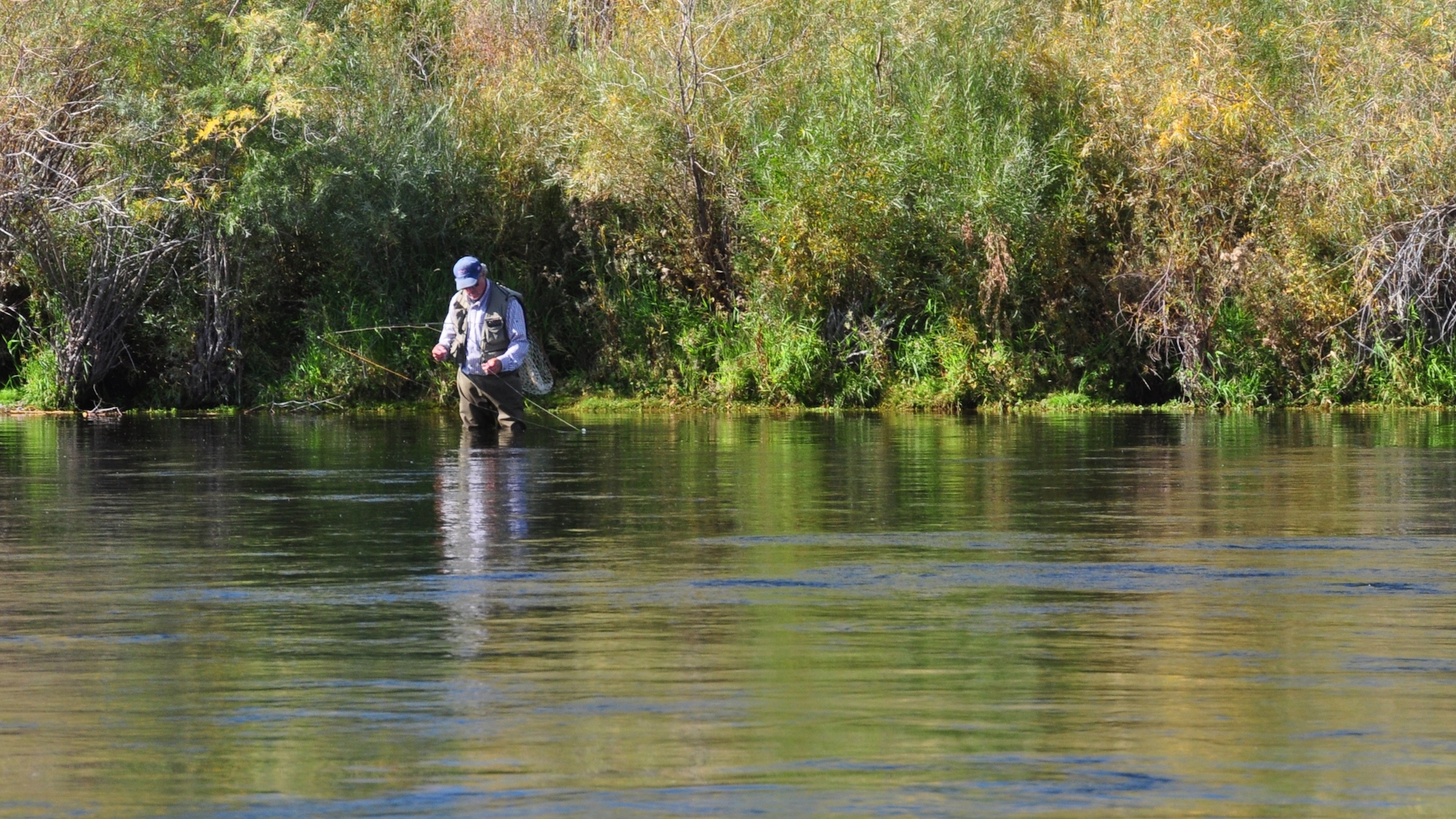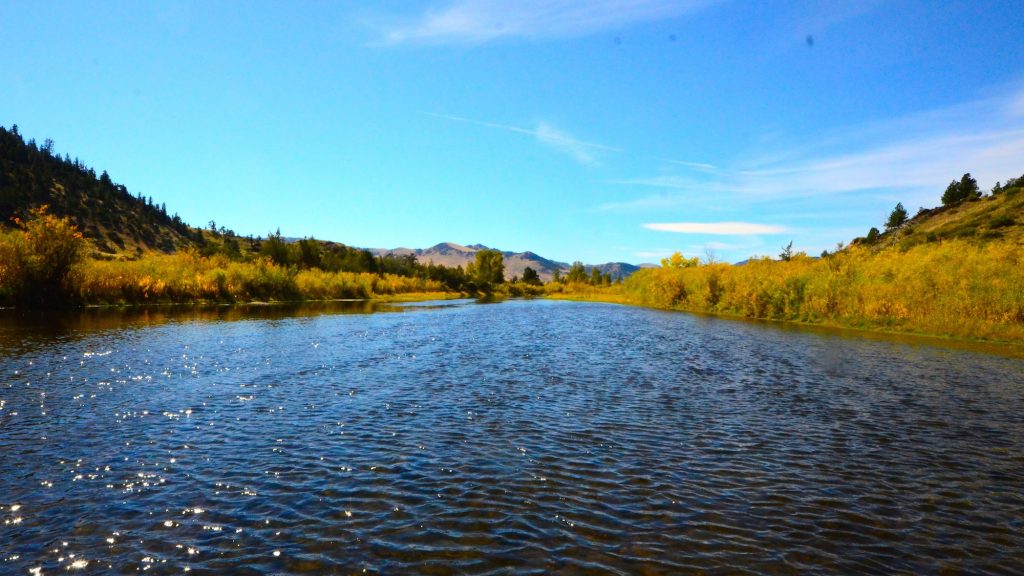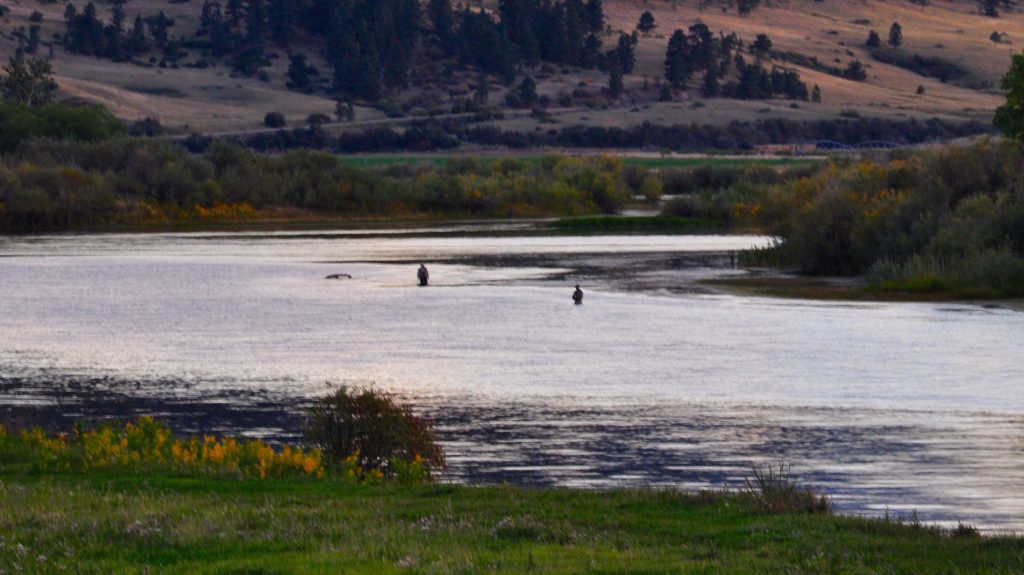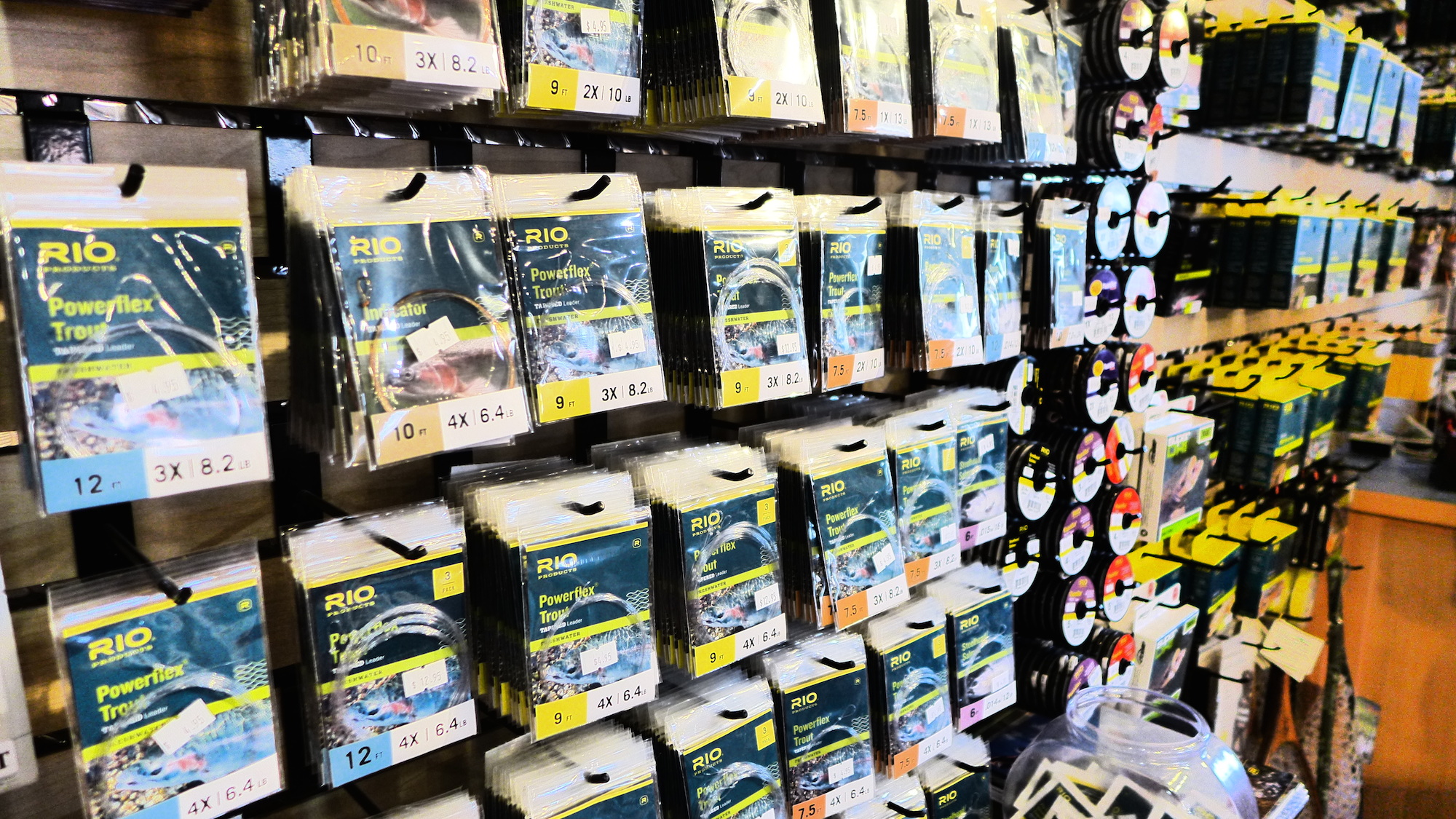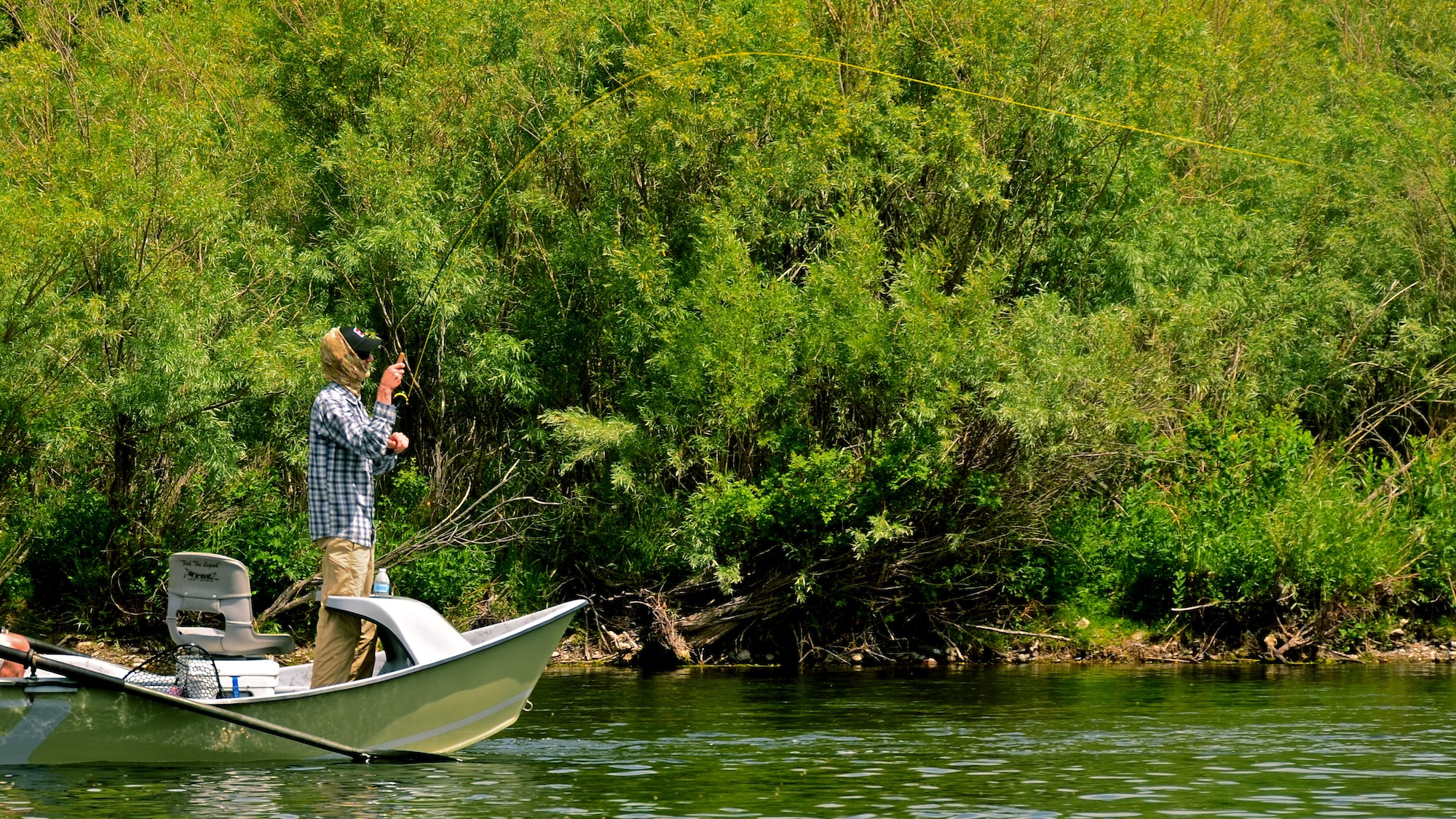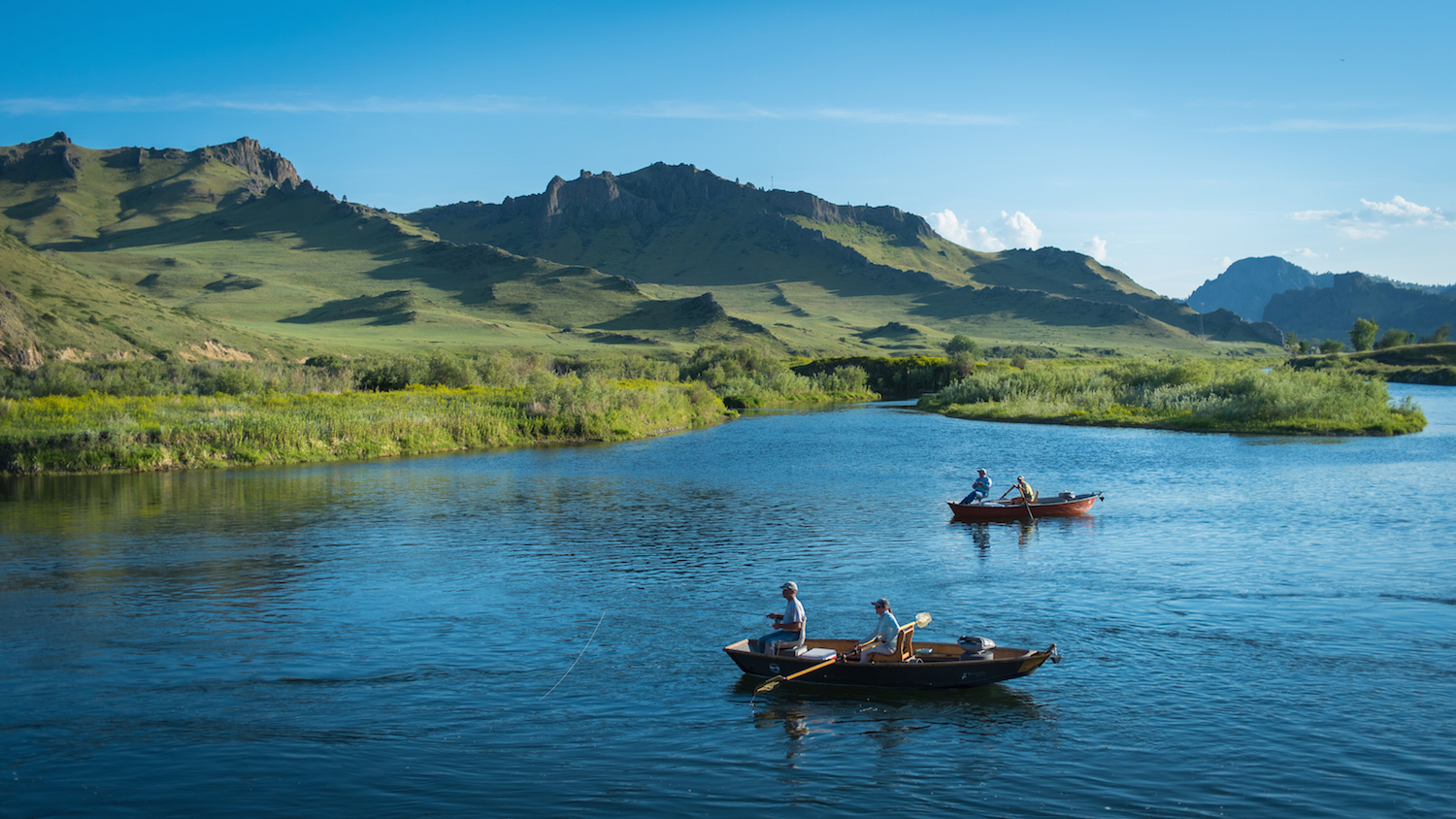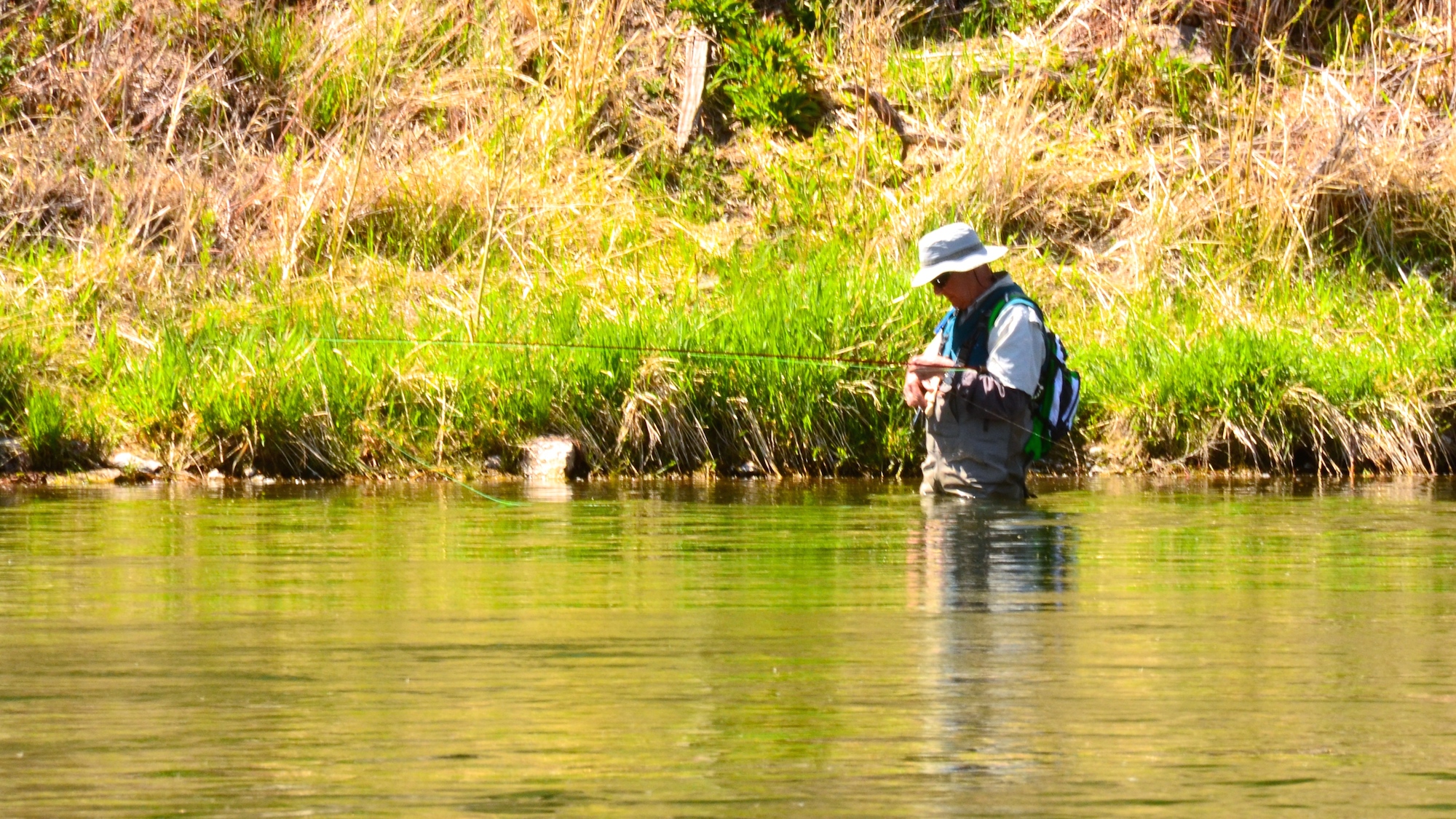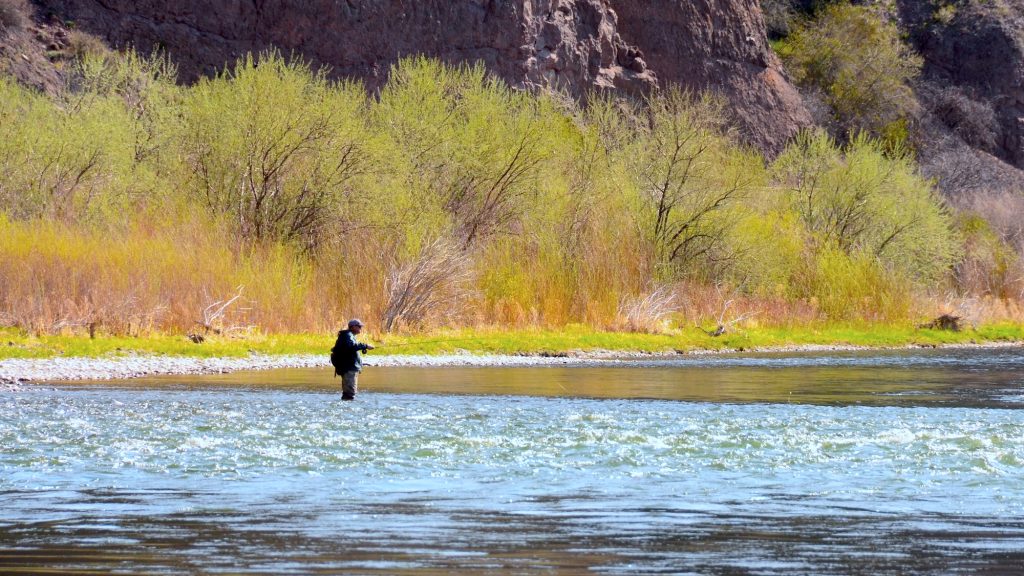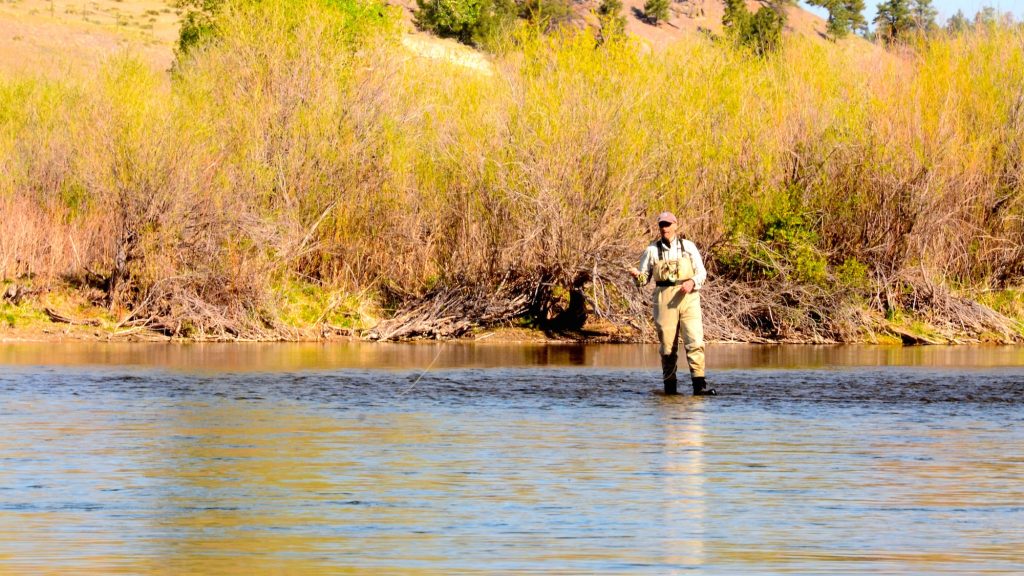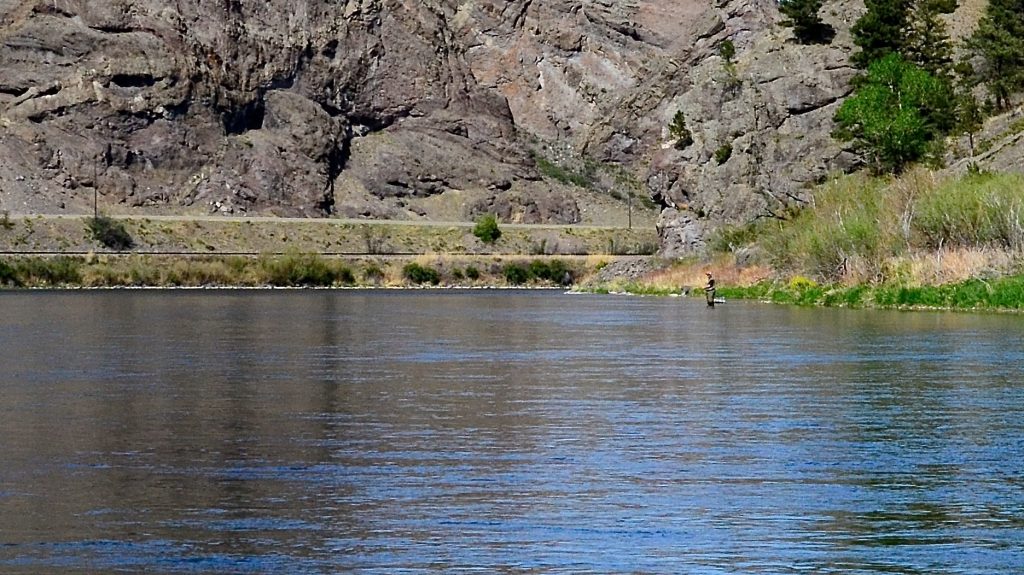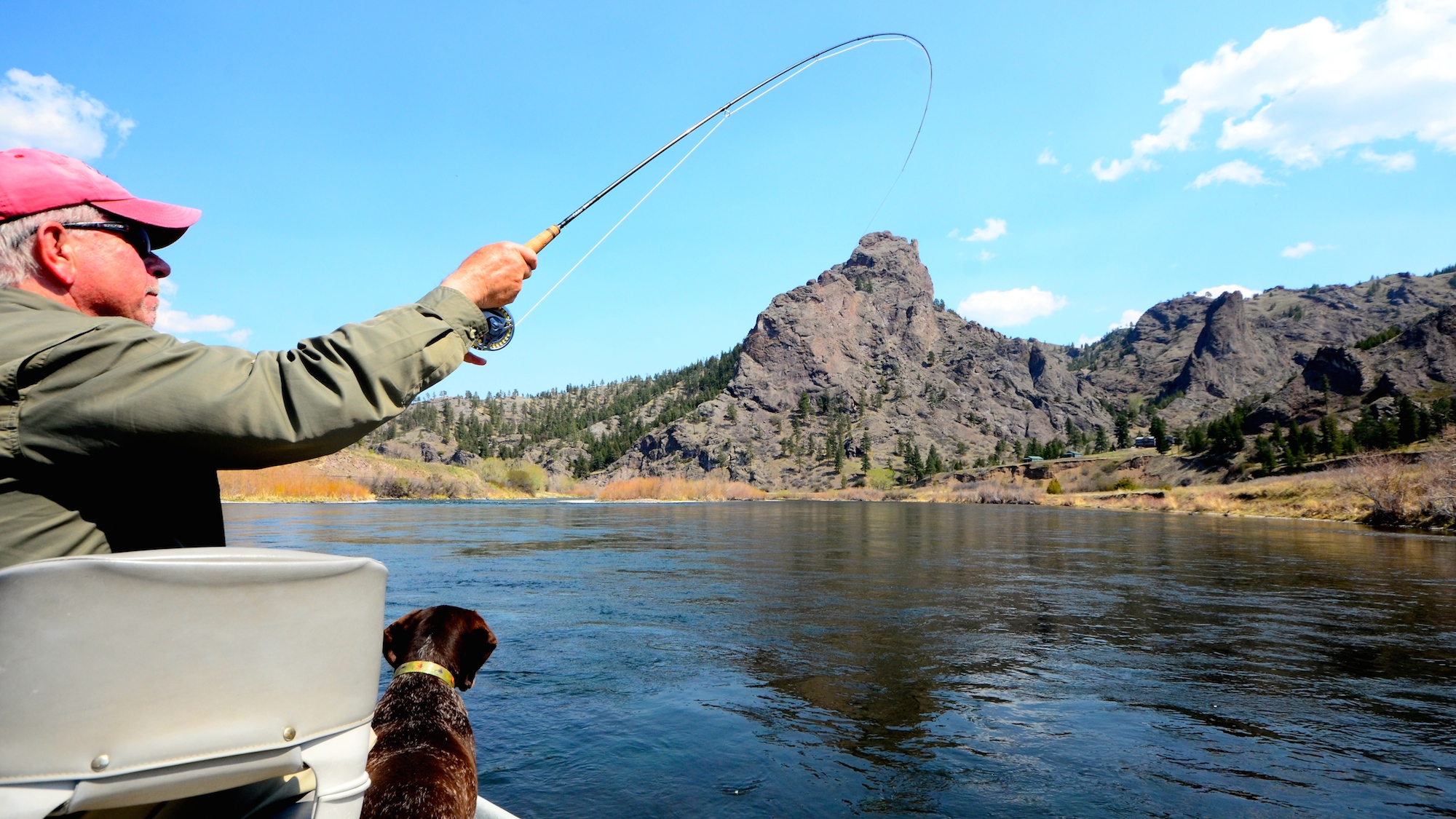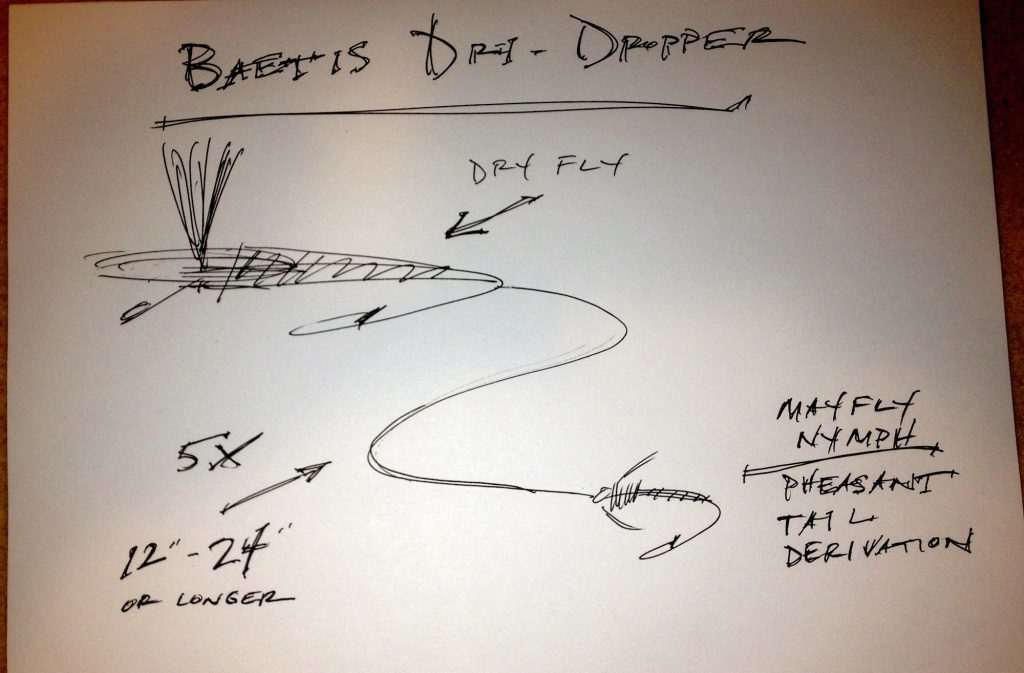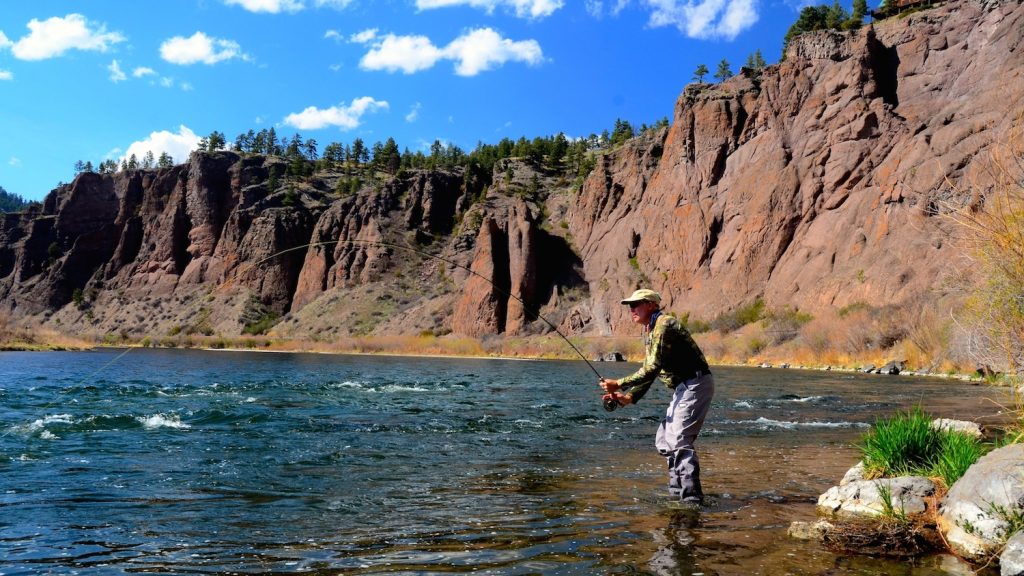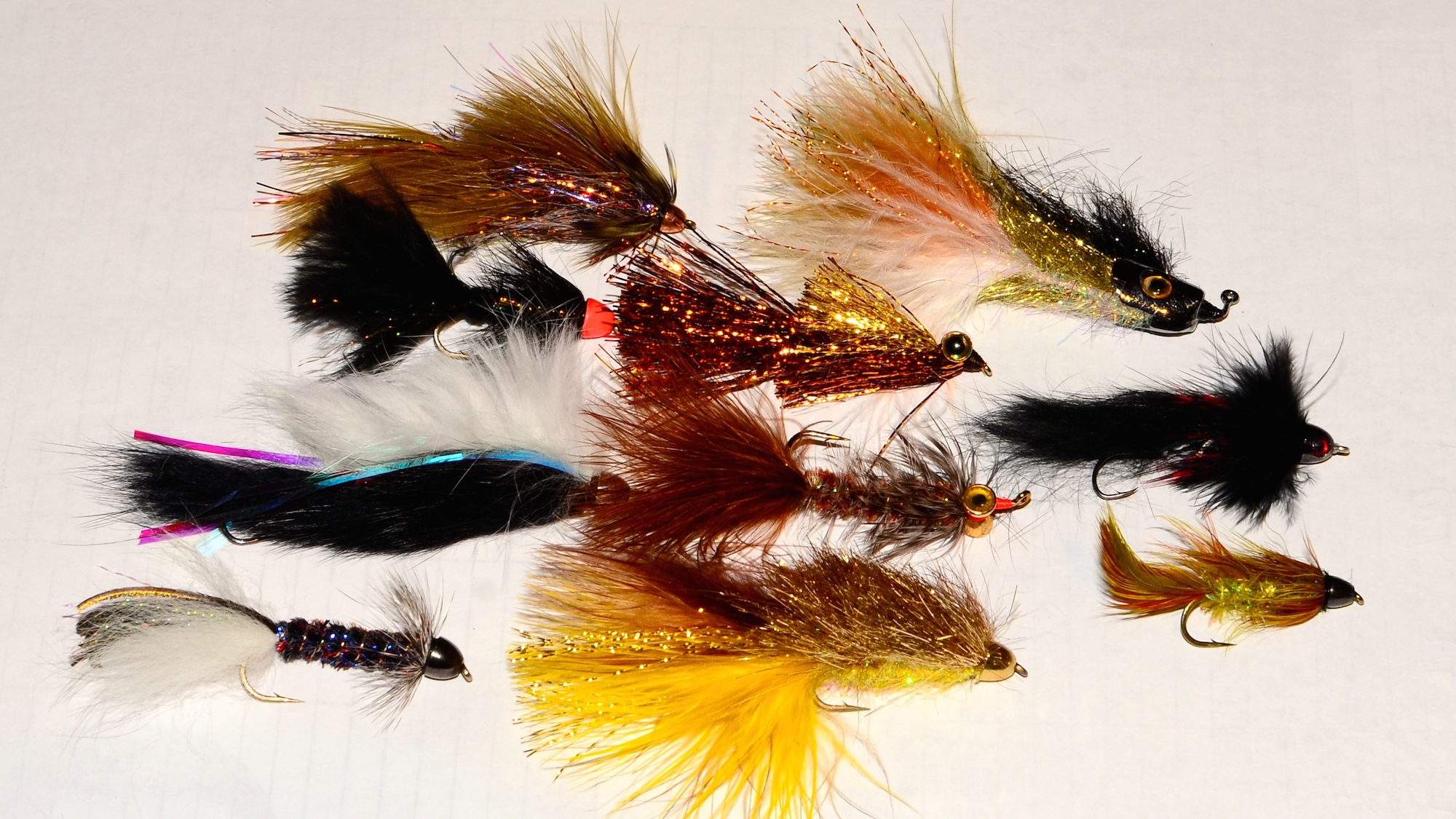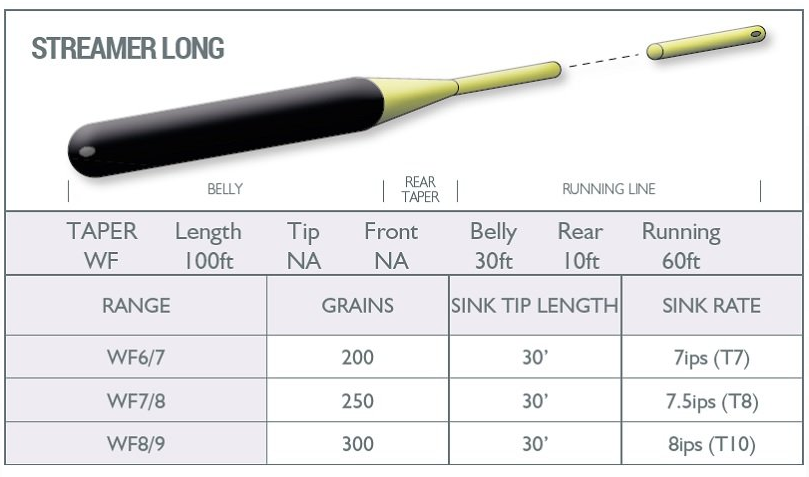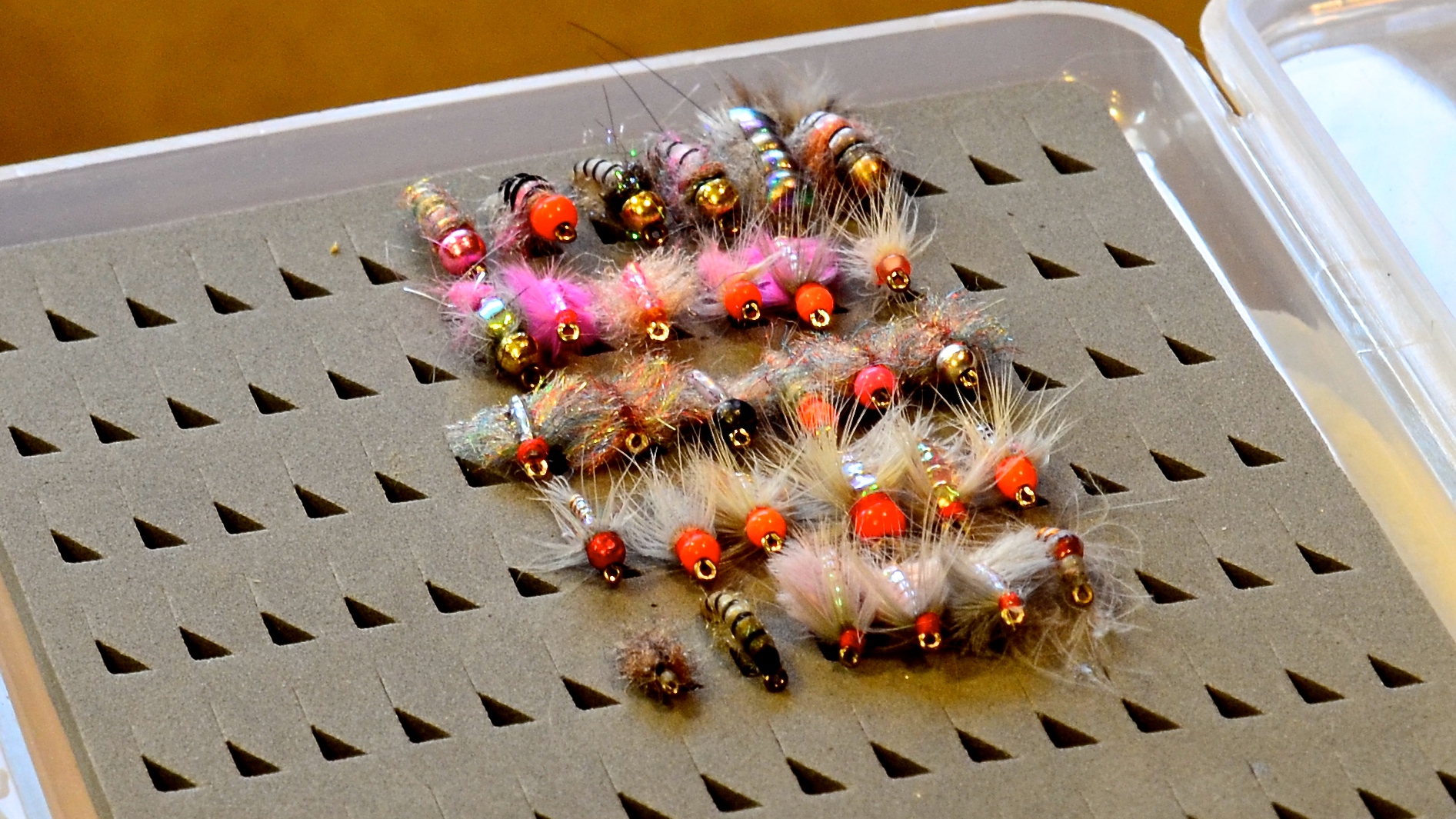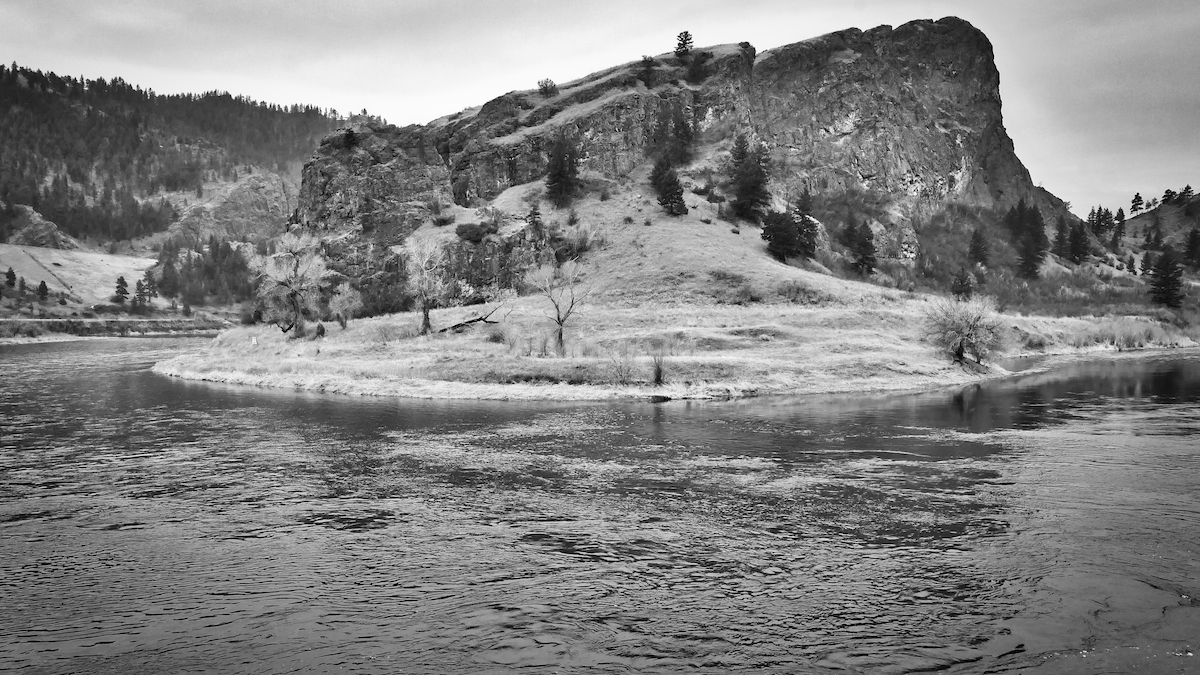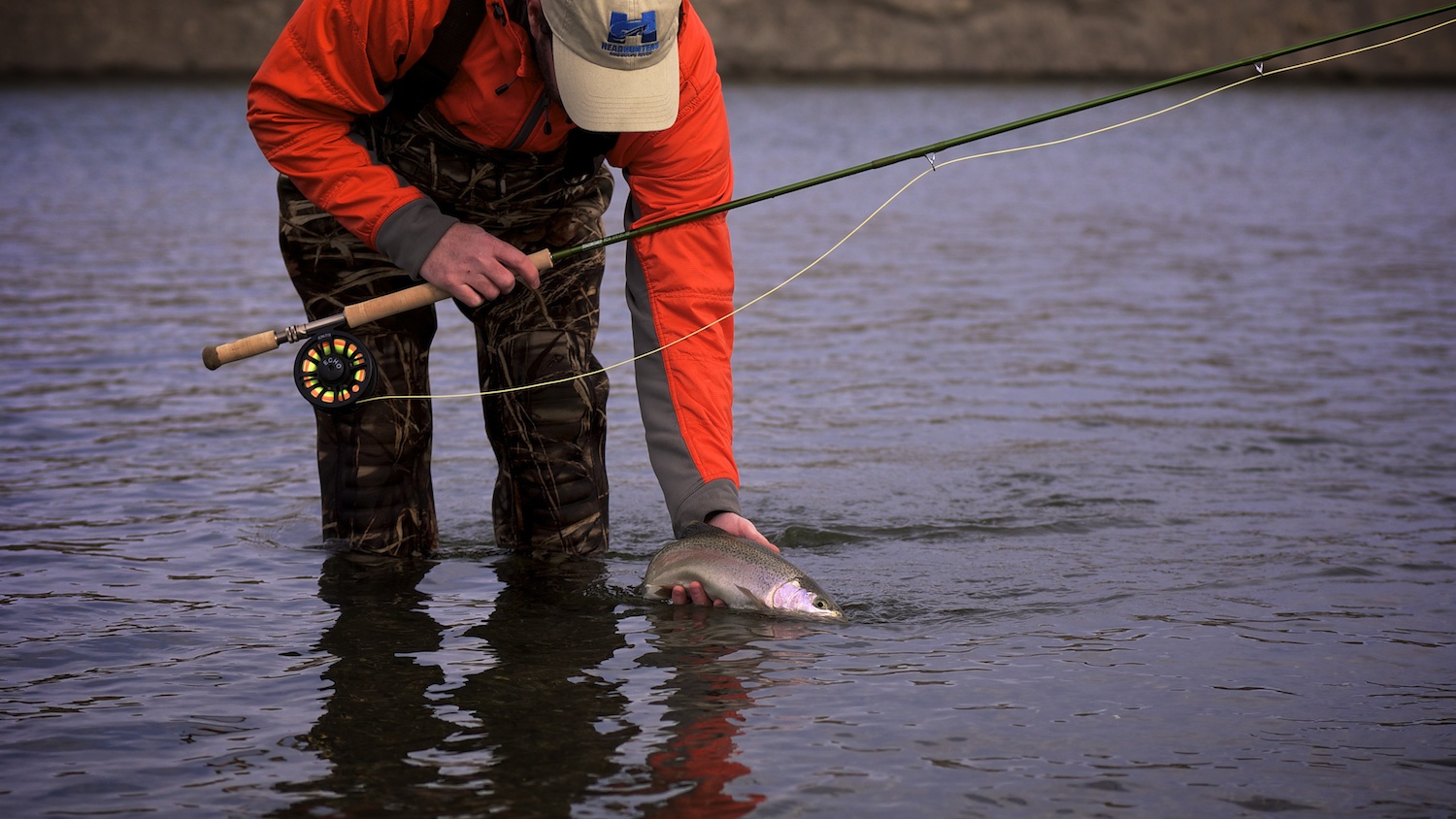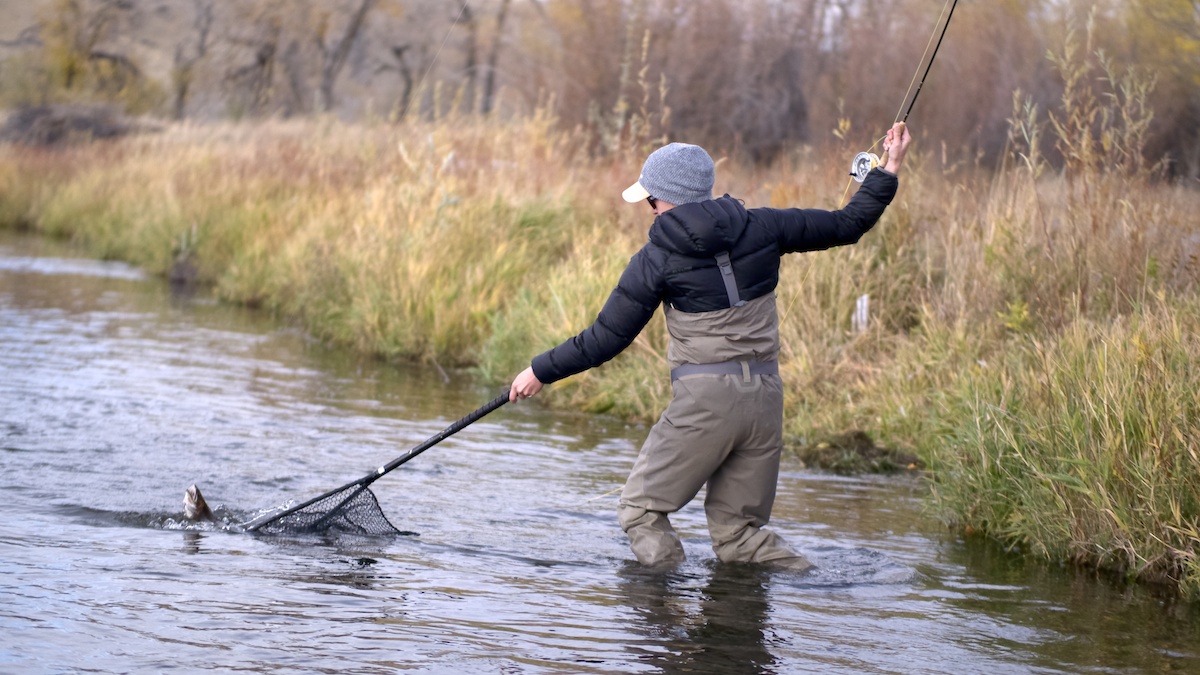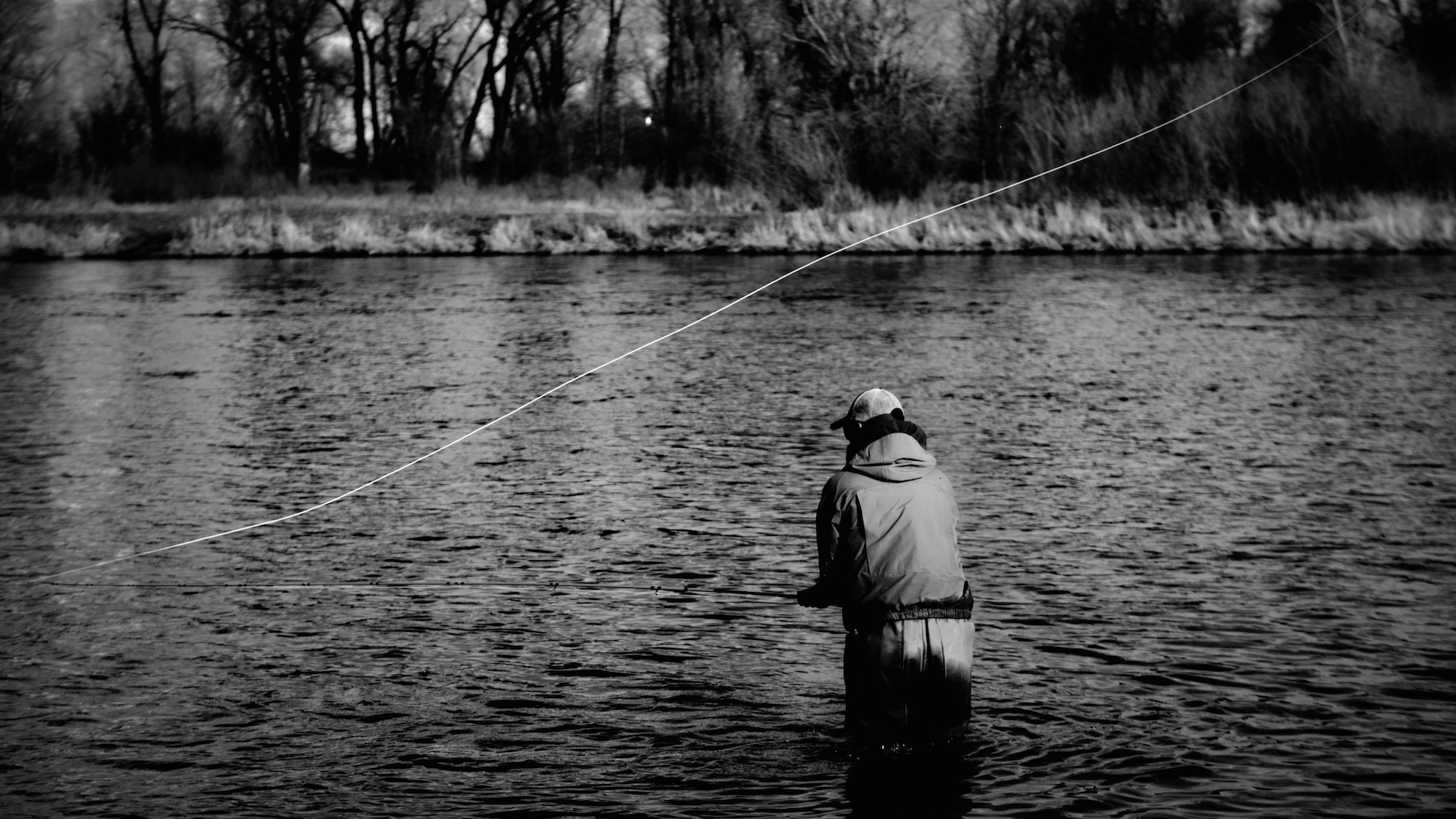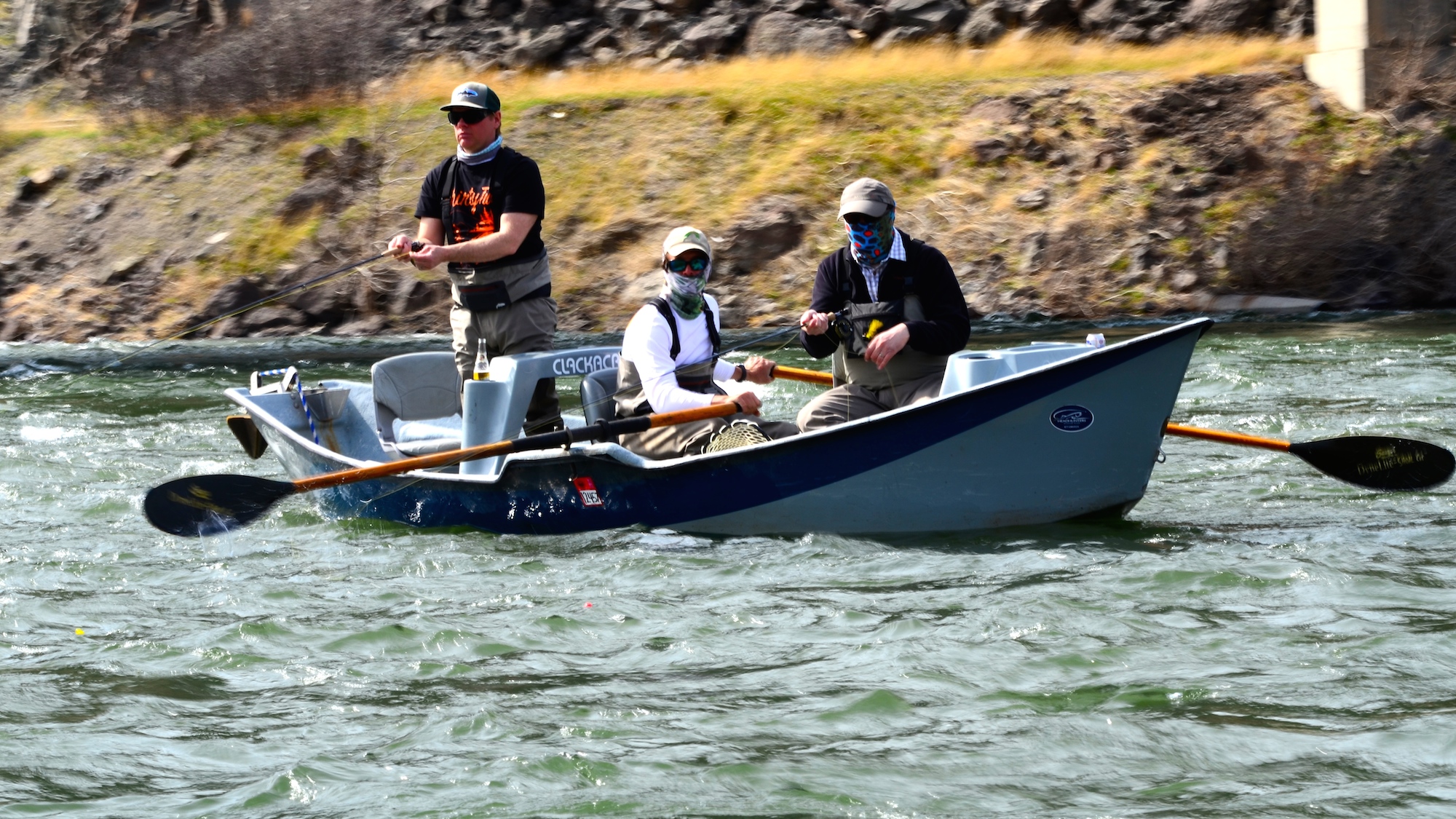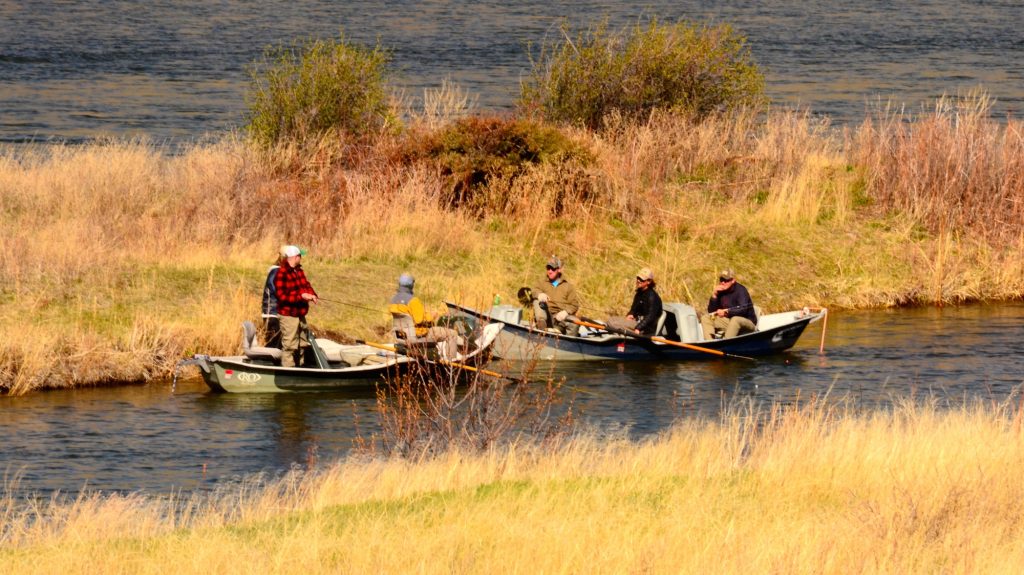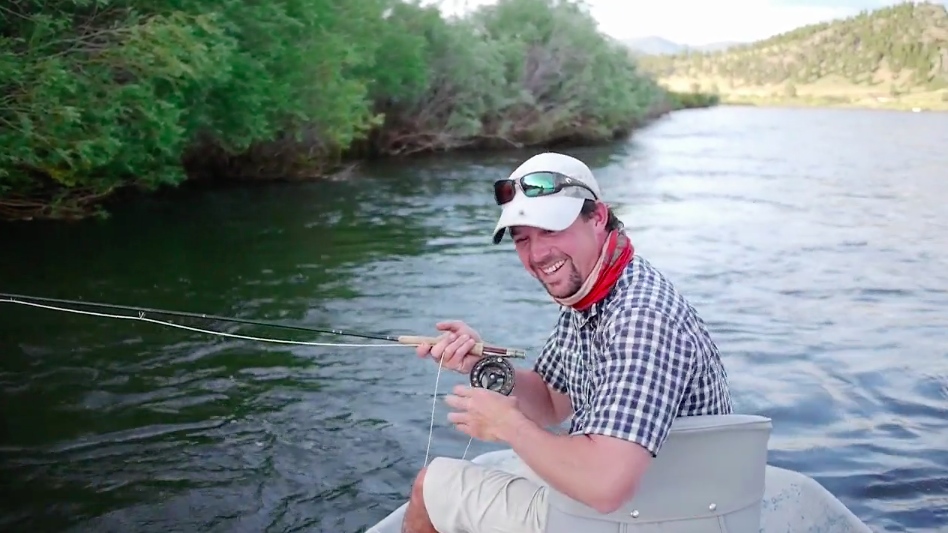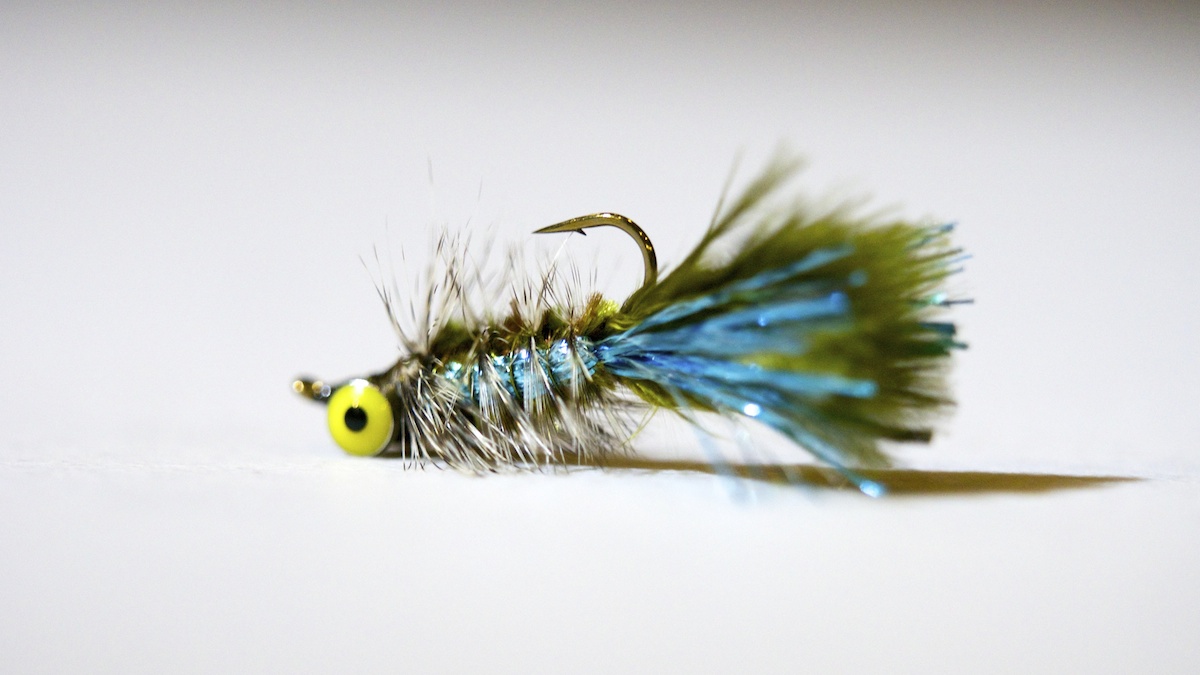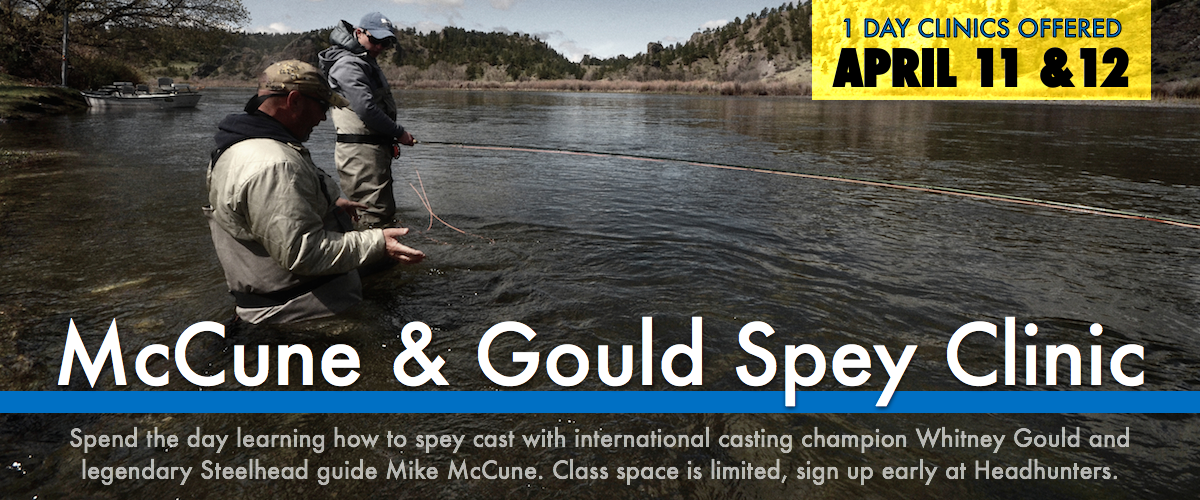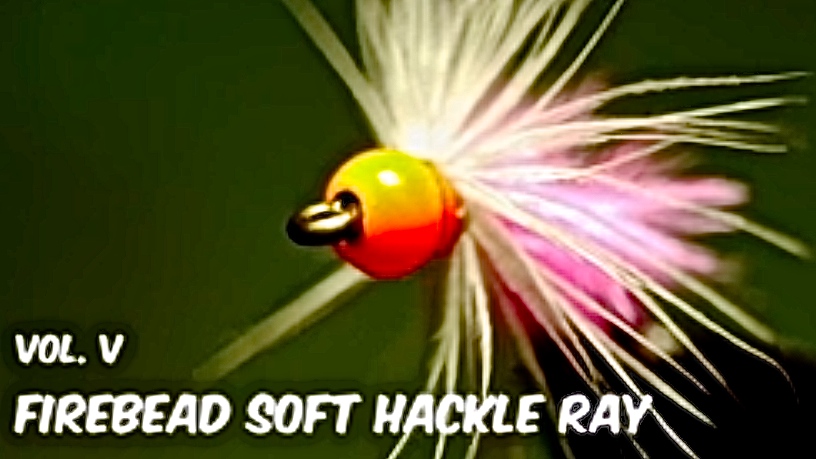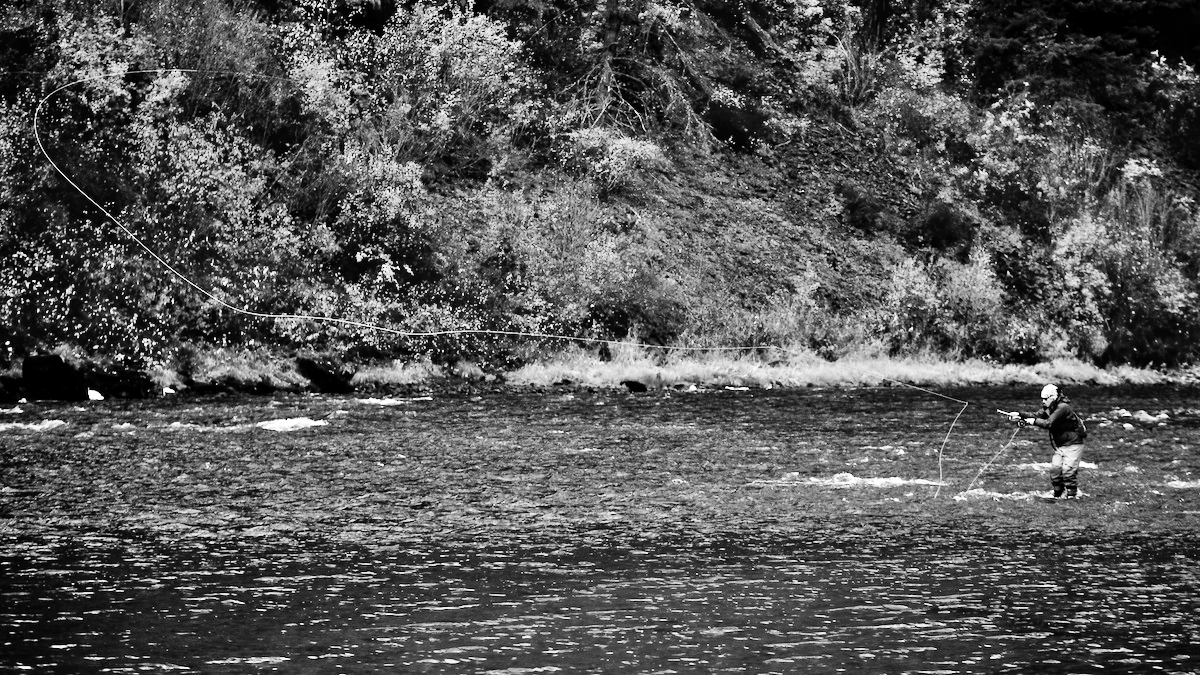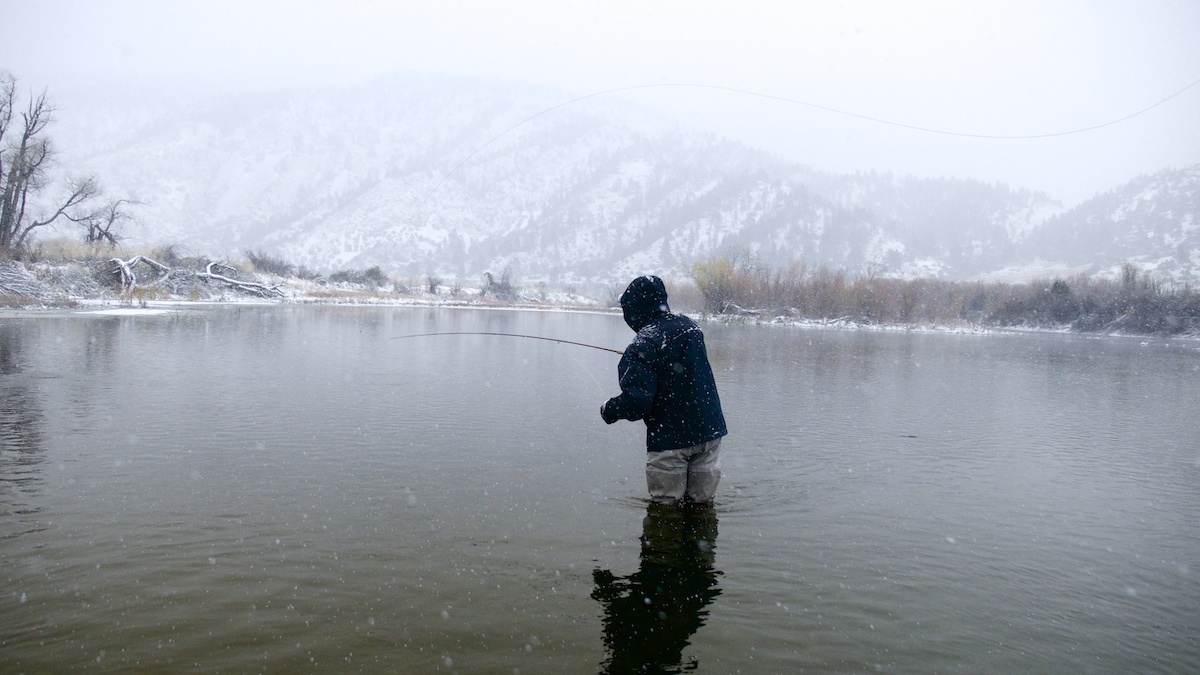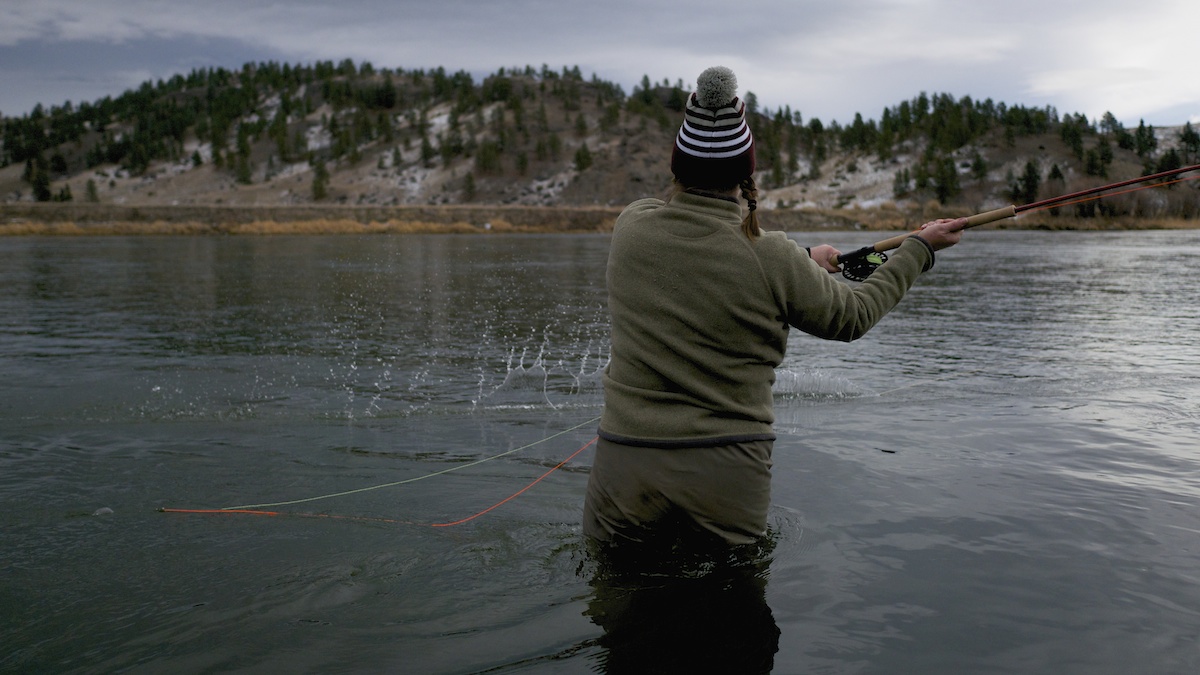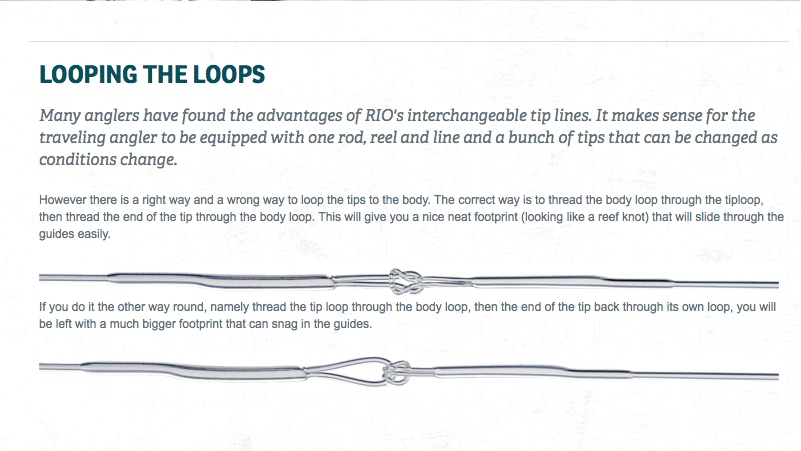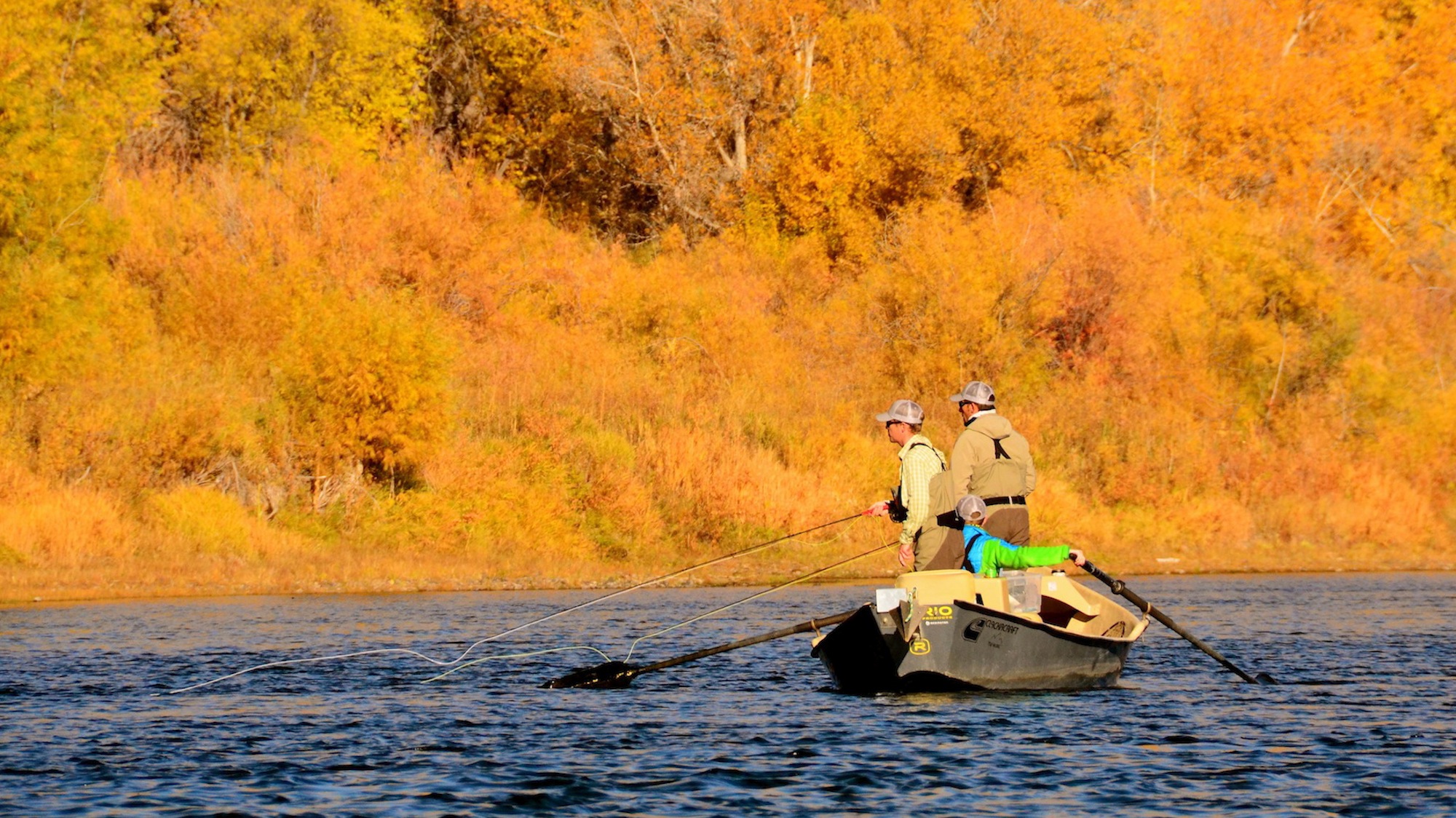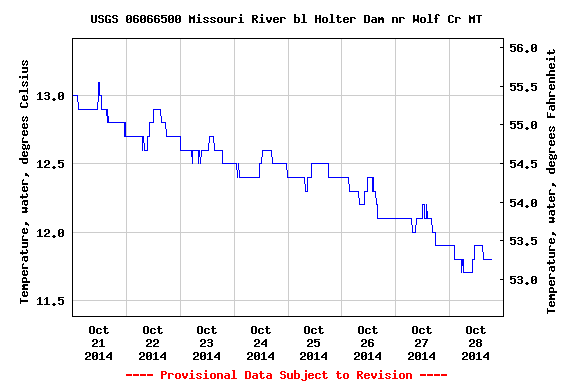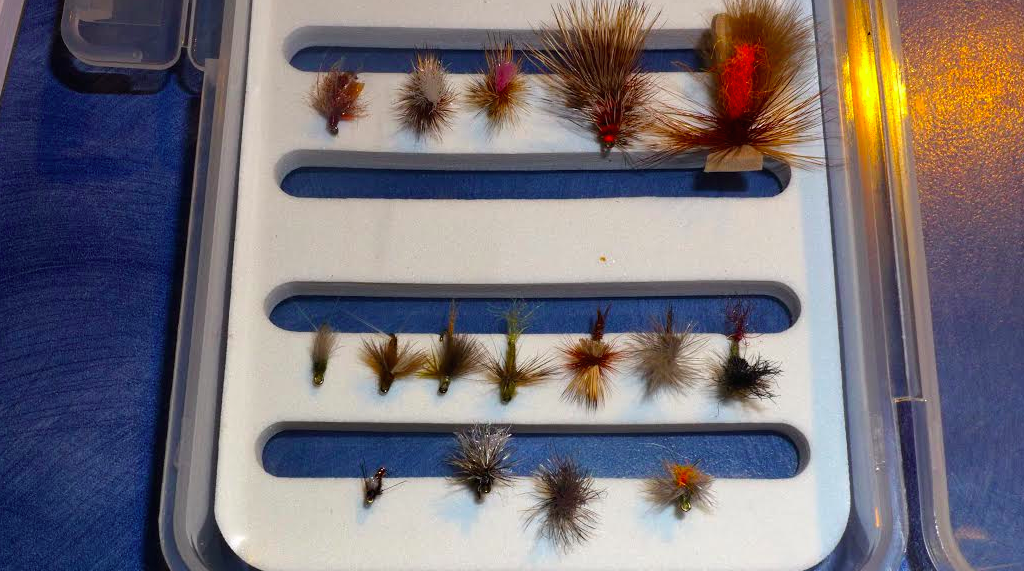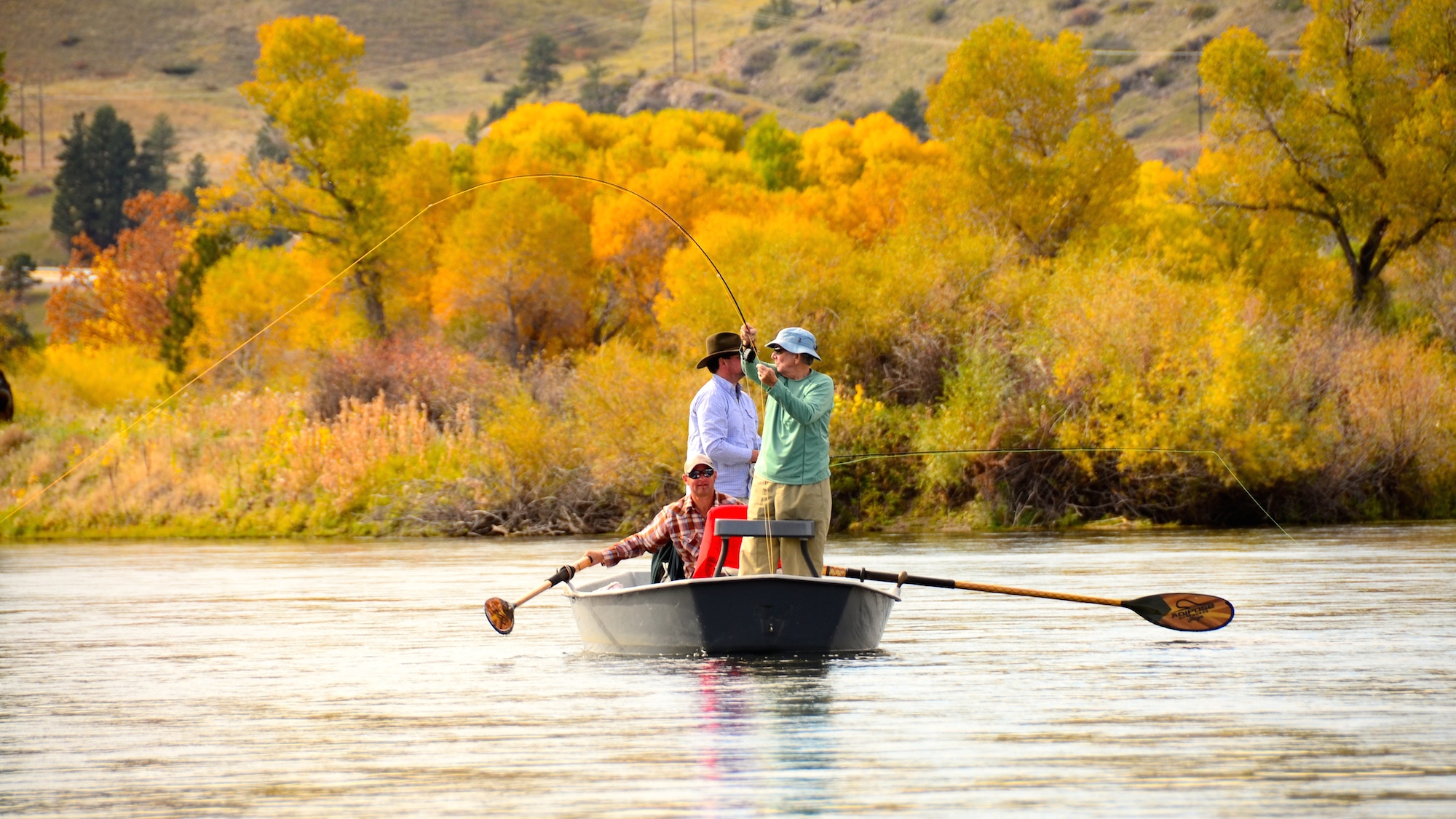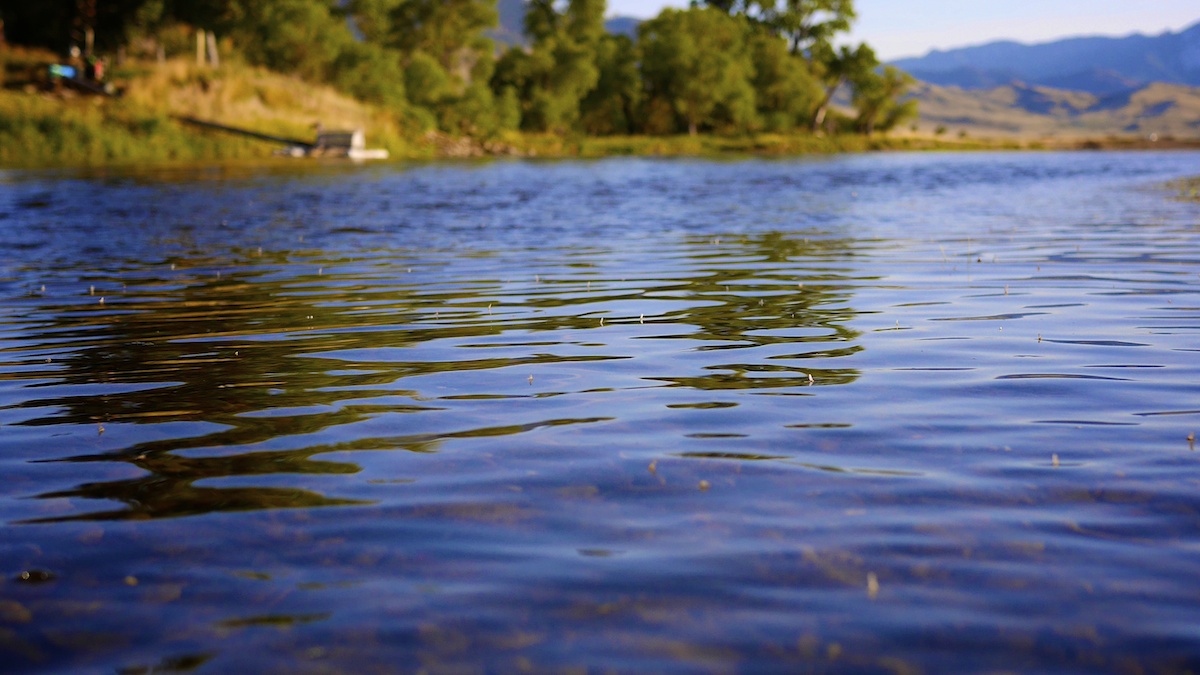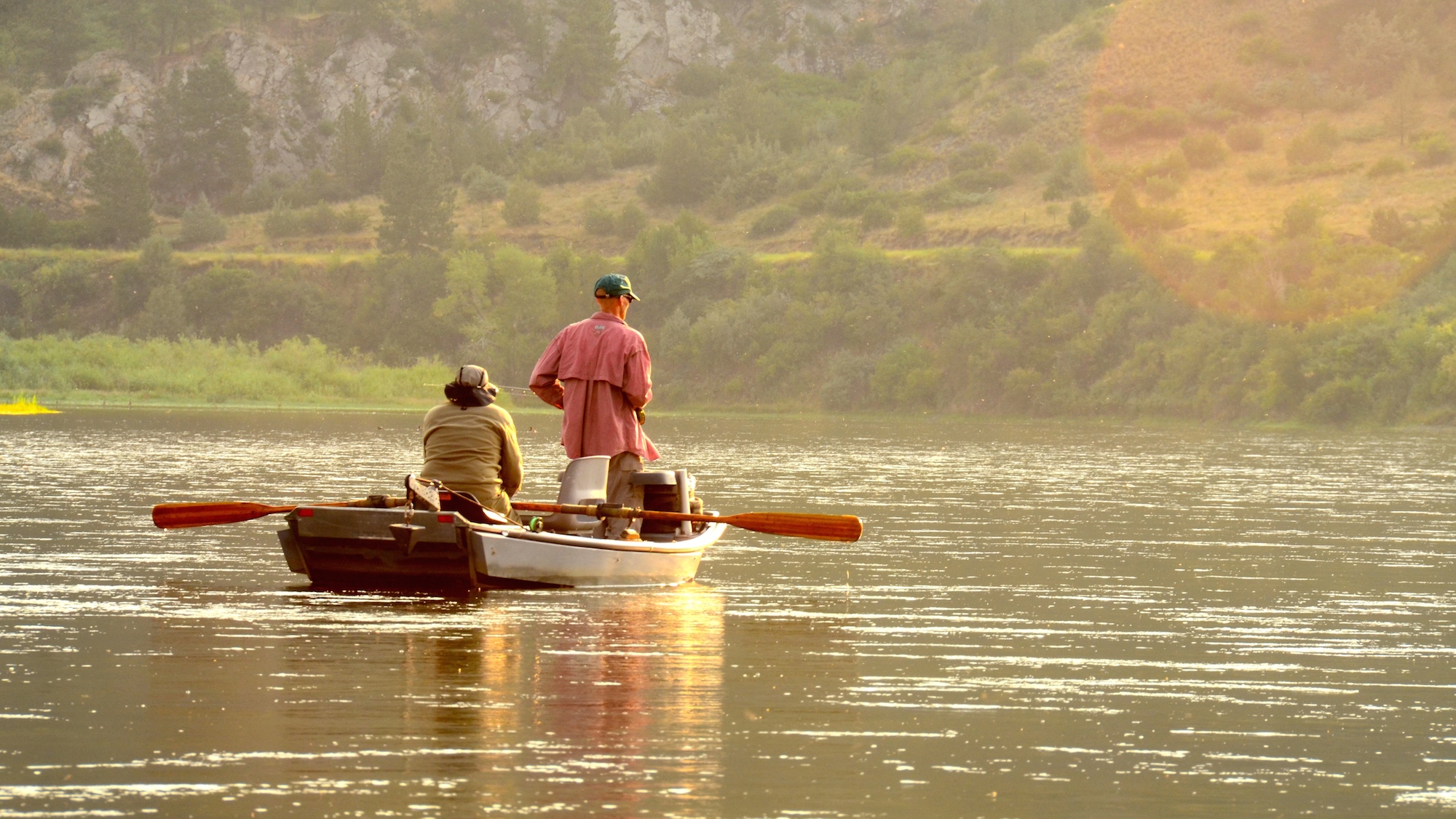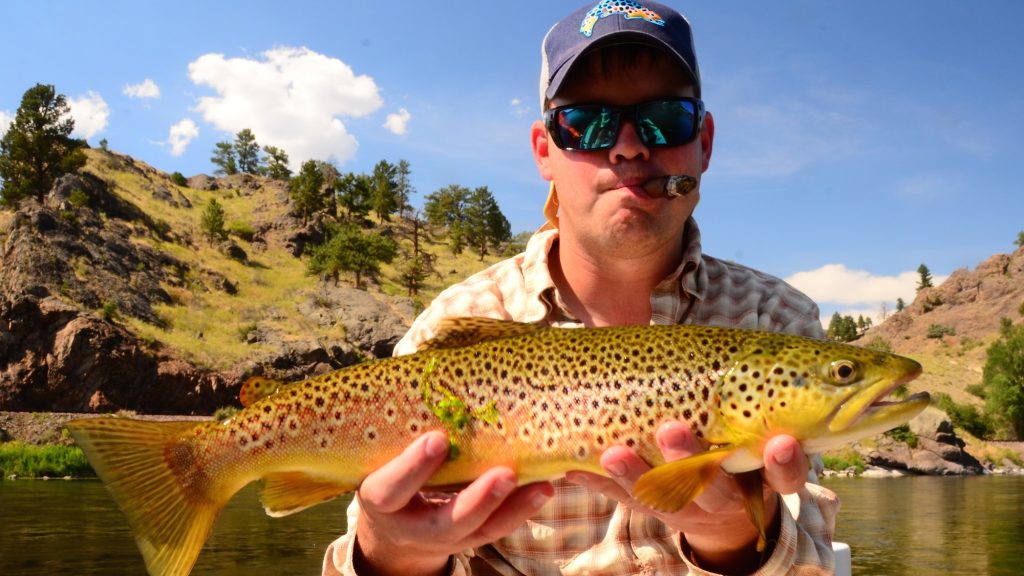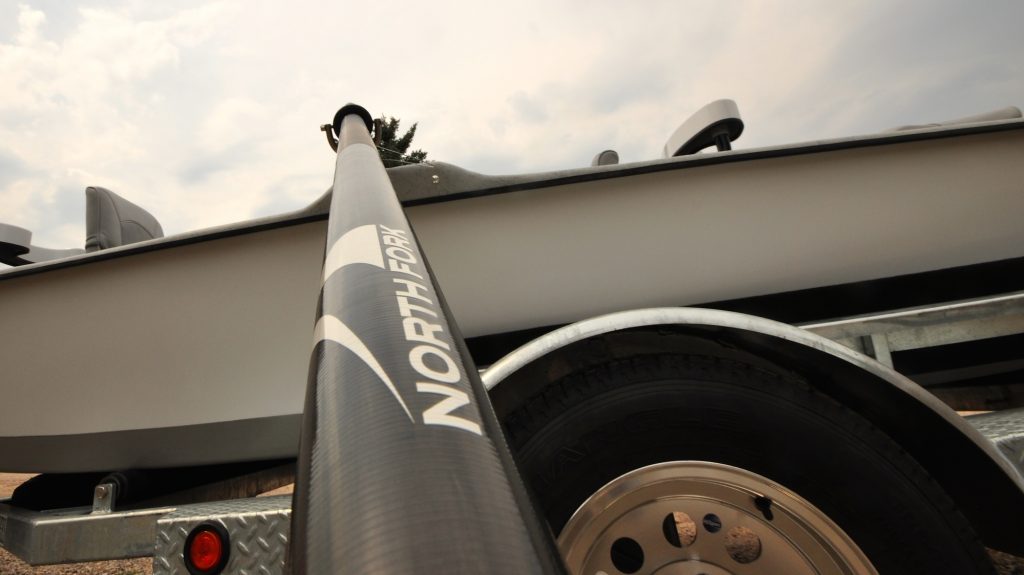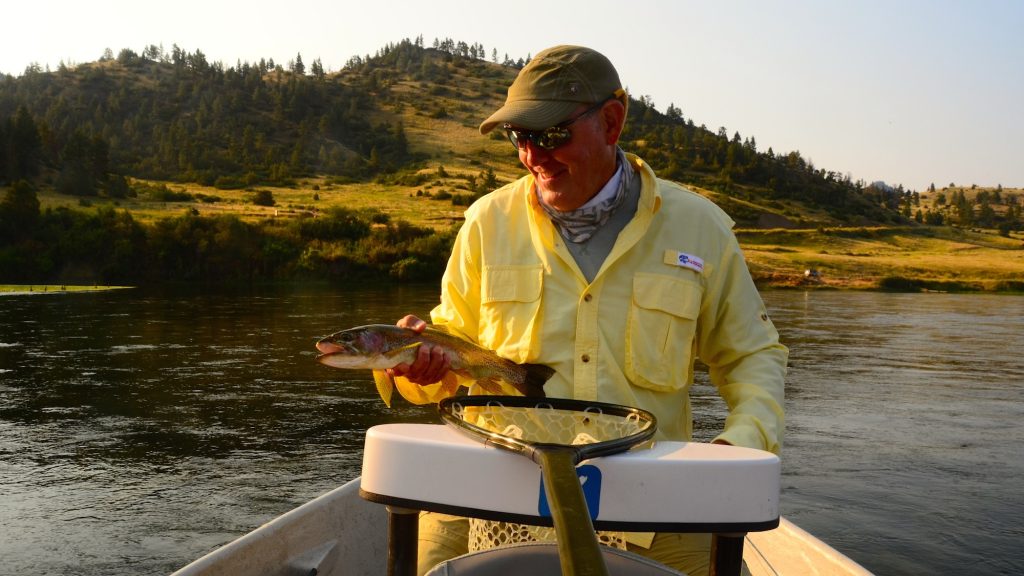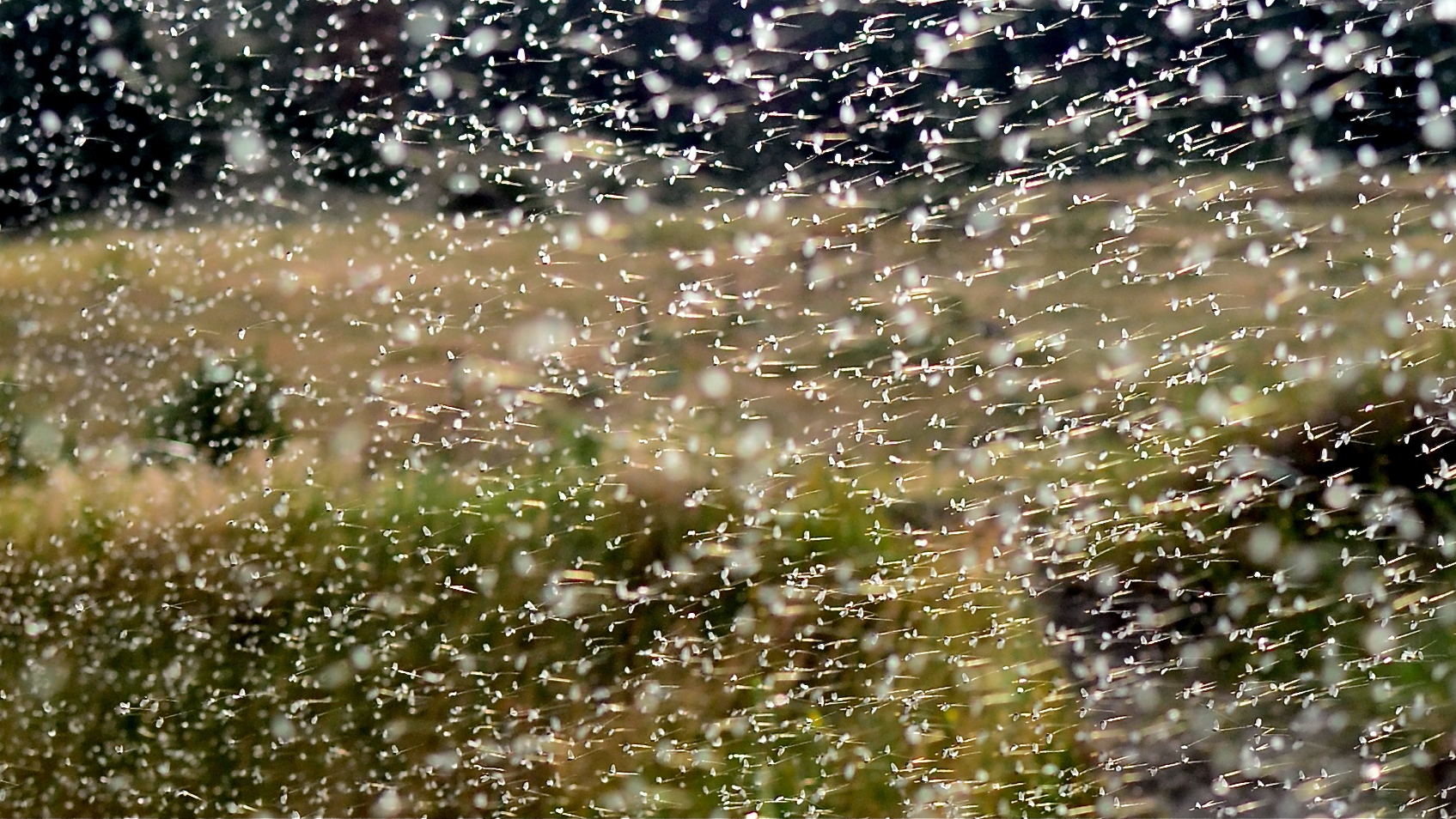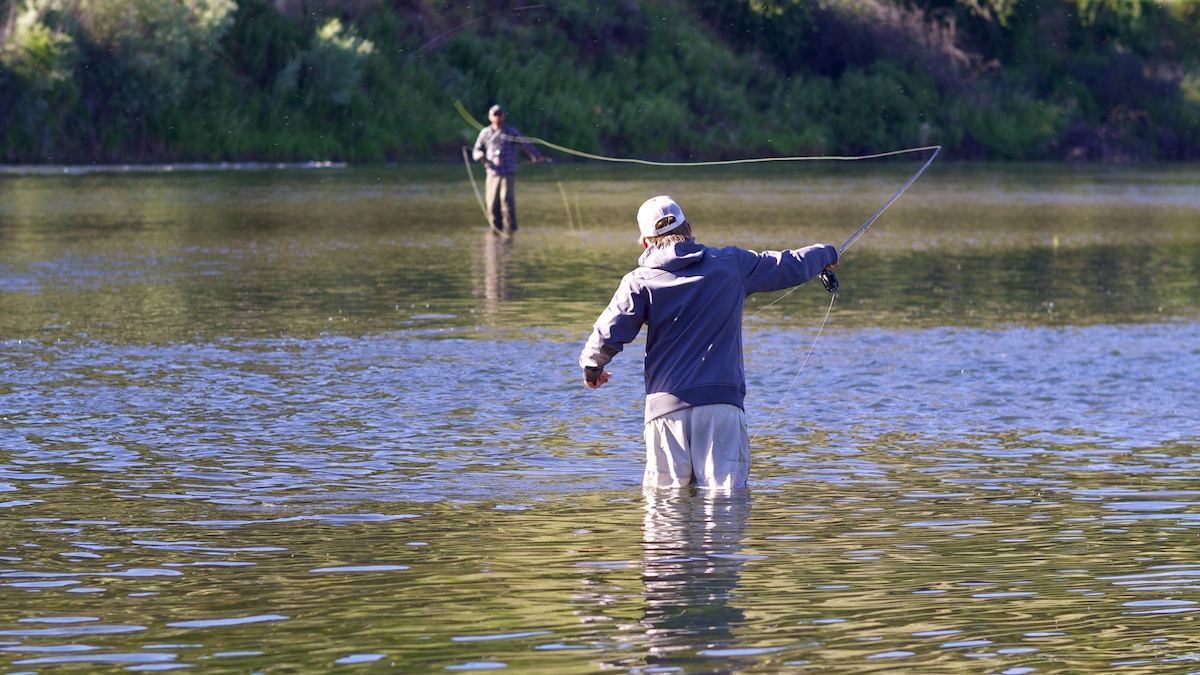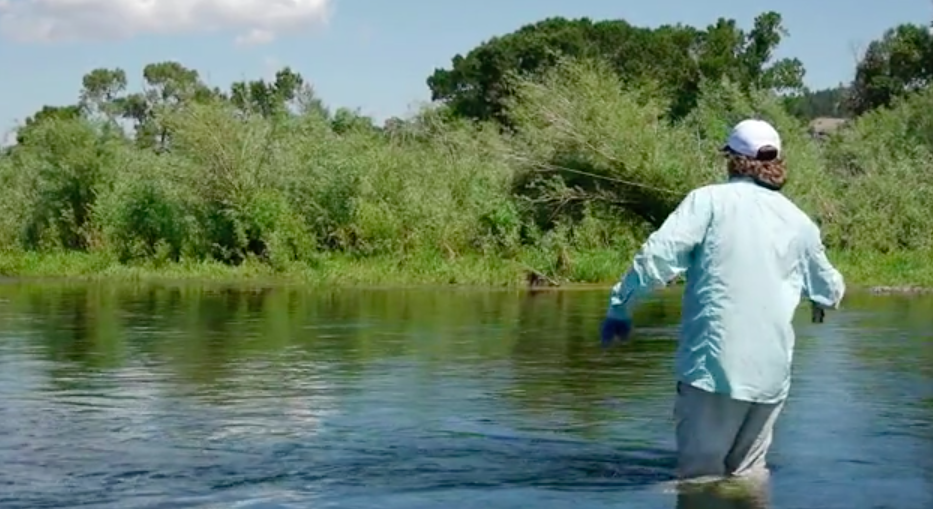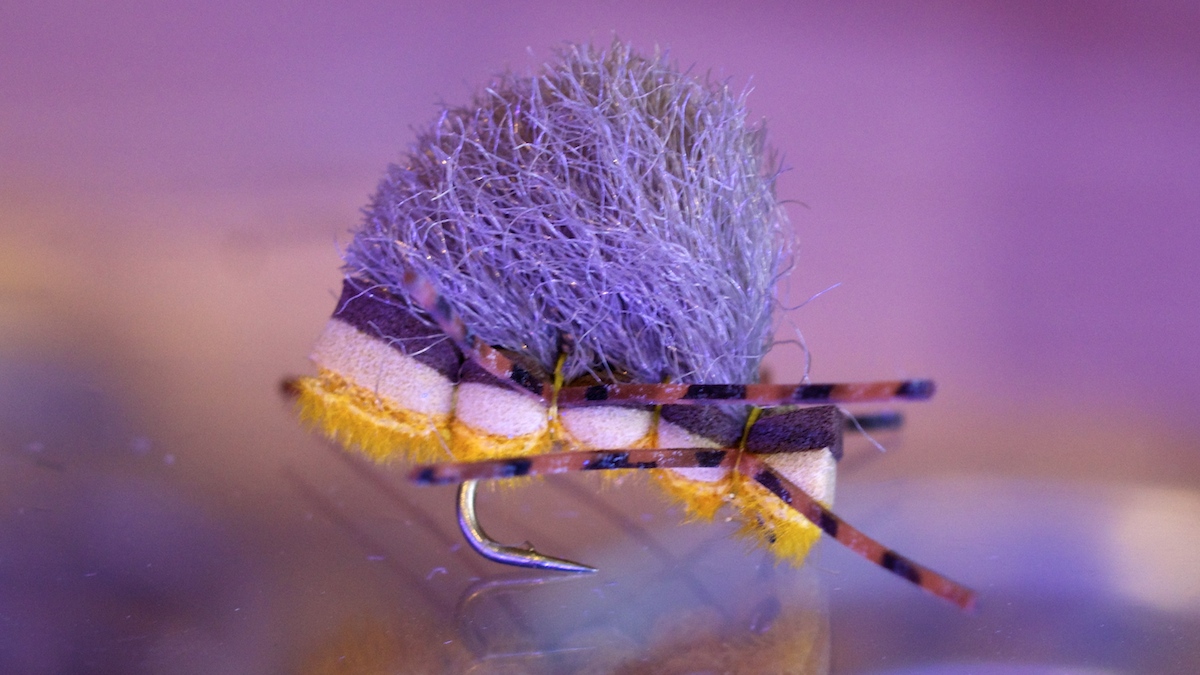[vc_row][vc_column width=”1/1″][vc_row_inner][vc_column_inner width=”1/1″][vc_column_text]One of the most common questions I receive in the boat concerns the reasoning behind the leader and tippet I am using. I am sure that the saltwater guides, steelhead, salmon, and bass guides receive the same questions.
It is not that it is not all that intuitive. When you approach a wall full of leaders in any fly shop there is an staggering number available today! They range from 5’ 1X to 15’ 7X. Which one do I need? What length do I use? Does it matter? What strength and what is that “X” thing? Do I use 3# if I am only catching trout under 3#? A 3 pack of leaders? Do I need more than one? I certainly do understand where the confusion stems from.
The confusion regarding the purchasing and the rigging of trout fishing gear can be cleared up if we understand why we are using specific leaders and tippet.
When I first started fishing most of my fly fishing mentors built leaders by hand. Leader designs by George Harvey, Gary Borger, Jim Vincent, Lefty Kreh, or any one of your trout club buddies. Hand tied leaders were not only popular but common. The consistency and quality of these machine built tapered leaders was not what it is today and some anglers just did not trust them. The quality, consistency, and selection of today’s leader and tippets can be overwhelming! The number of fantastic leader products of yesteryear did not come close to the selection of leaders on the shelf today.
We can find leaders for such specific uses as Bass, Tarpon, Redfish, Muskie, and of course trout. Most are made of nylon but you can find leaders with coated steel for those toothy critters too!
Let’s talk about the ‘why, what, and how’ of specific trout leaders and tippet.
Fly Fishing Leaders are generally tapered. They start with a butt section, lets say 0.021”-0.25” and taper to 1X or 0.10” to 7X or 0.004”. Hand tied leaders would have several knots, as many as 7, to achieve the same kind of taper. That is why machine tapered leaders are so easy to use. No knots! Just loop it on your fly line http://www.rioproducts.com/fishing-tips/looping-the-loop/ and tie on a piece of tippet to finish out the rig.
The Why, What, and How of Trout Fishing Leaders
Dry Fly Leaders
Dry fly leaders are built with the angler in mind! Generally 9’ to 12’ and even 15’ these leaders are very good at turning over the light CDC fly you are presenting to the trout. Dry fly leaders are not meant to turn over with the reckless abandon that the nymph leader will, but designed to finish strong, yet land lightly. I like to start at a 9’ 3X or 9’ 4X as my generic dry fly leader. Great for prospecting with an Adams, an Elk Hair, or any smaller grasshopper or attractor pattern.
Simply add some tippet whether it be a length of 4X onto the 3X leader end or 5X for the final piece of the 9’ 4X leader. 12” to 48” will suit you fine. Don’t be shy about adding a 48” section onto a 9’ leader. If the formula is right, and it is designed to deliver, it will turn over.
It never hurts to practice some of this stuff in your yard to discover which leader length is for you.
Recently, 2014, I was turned onto the 12’ RIO Powerflex Leaders. Awesome. For tailwater, spring creeks, or pressured fish this is the right leader for you. I became very familiar with an additional tippet length of 48”. Total length from fly line to fly? 16 feet! Works like a charm. I found that if it does not turn over perfectly you need not worry. Let the current pull it downstream and the slack in the line/leader, will help in achieving that perfect drag free drift. Fish are rarely afraid of a perfect drift!
The RIO Powerflex line http://www.rioproducts.com/fishing-leaders/freshwater/powerflex-trout-leader/ of leaders will get you through the toughest of trout fishing situations.
Why would I use a Fluorocarbon Leader?
Fluorocarbon leaders are stealthy. A leader that many nymph fishermen use allowing the flies to achieve depth sooner. Fluorocarbon leaders sink. Not like sinking leaders with added weight, but the porous nature of the Fluorocarbon material will not float like its nylon cousin. I find myself using them when the fish have been pressured. Mid Summer and late season trout can dictate this useful leader for specific uses. Having a Fluorocarbon leader in your wallet can be a smart thing. Use it wen you need it.
How about those Indicator Leaders?
Here in Montana the RIO Indicator Leader http://www.rioproducts.com/fishing-leaders/freshwater/indicator-leader/ is tied on my nymph rod for months. I begin to employ the Indicator Leader in November and it does not come off until mid summer. The 10’ length is perfect. A powerful butt section and a very =short 2′ taper will easily turn over any indicator or heavily weighted split shot rig you may find yourself using. The long and level tip section allows for rapid sink rates. This leader tapers from the butt section to the static diameter remainder after 2 feet. 2 foot of taper from butt to the diameter of your choice. I like to use the 1X/0.010” as my everyday nymph leader. The beauty of the 8 foot level section measuring 1X/0.010″ is that I do not have to worry about the taper when adding, subtracting, or fixing a tangled leader. I know that after the very short 2’ taper the leader is 1x or 0.010”. No freaky leader building math needs to be done. Simplicity is what I like.
This leader sinks rapidly as well. No knots to slow it down or knots to catch those pesky weeds. Traditionally tapered leaders sink slower. Not always good for nymph fishing when the goal is to get the fly to the fish as soon as possible.
The orange butt is easy to see while fishing and stiff enough to turn over even the heaviest of split shot nymphing rigs. The tough nylon is perfect for attaching sometimes large split shot to the leader. You can make split shot stay put on 1X!
Are there specific leaders for streamer fishing too?
You bet there are and they are useful. A 6’ Steelhead/Salmon leader can work well for our trout here in Montana. A great leader for those two handed rod fellas too. If you are trying to match rod length for a 2 hander the 12’ Steelhead/Salmon Tapered Leader is good as well. Whether you need it short for tying off of a RIO Outbound Short Streamer http://www.rioproducts.com/fly-lines/freshwater/specialty/outbound-short/ line or to get the right leader for your two handed set up there are leaders designed for every conceivable use.
Some guides use the 7 1/2’ 3X Powerflex Trout Leader for nearly everything. Why? Can you get along with just one leader? You can and some do. The beauty of the 7 1/2’ length is that you can build it much longer for dry fly use. You can shorten it by a couple feet and lash a giant streamer to it. Or you can just use it at 7 1/2’ and tie a nymph directly onto the leader. A generic leader used by many.
What is the #1 selling leader?
The RIO Powerflex Trout 9’ 3X. It once was the RIO Powerflex Trout 9’ 4X. Why the change? Who knows. The reality is you could also use this one leader for many uses. Chop for nymphing, lengthen for dry fly, or mutilate for streamer chucking.
A Tippet Primer
Do you mean to say I don’t attach a 2X tippet to my 2X leader?
The initial confusion in regards to tippet material comes from the “X” system. Why and what is 2X and why don’t I attach a 2X tippet to the end of 2X leader? Let’s get the “X” system straightened out first.
The “X” system is based on a factor of 11. It is quite simple actually and once you learn it you will never forget it. A 3X tippet is 0.008″ inch equalling the factor 11. 3+8=11. A 5X tippet measures 0.006” for a total of 11. You can see the correlation now. An 0X measurement is 0.011” Still adds to 11. 0+11=11. Now that the mystery is gone let’s move onto getting your leader prepped for fishing.
You can tie 2X tippet to a 2X leader. But you generally would not. There are exceptions to all of the fly fishing rules.
Leader and Tippet Frequently Asked Questions
How do I straighten my leader after getting it out of the package?
How do I straighten my tippet material? Do I use friction like I saw my father do with that old piece of rubber inner-tube hanging from his vest? NO!! While I did this for many years I have been straightened out myself. You never want to use friction to straighten a nylon or fluorocarbon leader. Ever. While it will straighten the leader, it also will reduce the strength and integrity of the material. This was an eye opener for me. I had been giving the trout an unfair advantage for 20+ years!
So how do you appropriately straighten your 12’ 6X leader? Zack Dalton of RIO and SAGE informed me a couple years ago that you simply pull on the leader in the same manner you stretch your fly line before use. If you do not already do this yourself you have seen anglers do this before. The leader and fly line both have memory and often times they need to be straightened. Take a section of the leader and pull firmly but without too much force with opposing hands. This will straighten the leader out so that you will get rid of the curls, the memory, in your leader.
What is the leader formula that most trout anglers use?
The most common theory and leader design formula used to be 20% butt section, 60% taper section, and a 20% tippet section. Generally you would tippet out beyond the leader tippet section of a leader with your own tippet section. The 20/60/20 formula has changed in the recent past. Now most are following, or most trout anglers in my region, are following the 60/20/20 formula.
Should I have different leaders for different situations?
Yes. A leader wallet http://www.rioproducts.com/fly-fishing-gear/storage/leader-wallet/ will be something you find yourself needing at some point during your leader discovery journey. Leaders are not a single use item, most of the time, they can be removed from your fly line and re-inserted into your leader wallet for use at a later time. I find myself changing leaders for the situation. An easy change from nymphing to dry fly fishing with a single rod is quite common!
My nymph rod has a 10’ 2X Indicator leader, my streamer rod has a 5’ 12# leader, and my dry fly rod is set up with a 12’ 4X leader. Why?!
Now we know that there are different leaders for different disciplines. Your leader wallet is an accessory that you may find important as you expand your world regarding leaders. Understanding not only the “why” of your leader selection but the “how” is important. I commonly have guests show up with a new 9’ 5X leader on their nymphing rod. While you may use that in some rare occasions it is not the right start for the Missouri River where 3X is more common than 5X on your regulation nymph rigs!
Having choices and understanding that dynamic nymphing requires the angler to become adaptive to many nymphing scenarios.
Dry fly fishing requires the same. Sometimes you may have to lengthen your leader when fishing for finicky surface sipping trout. Stretch out the tippet and the leader. You may want to shorten the leader when casting in the wind or when required to make an accurate cast where upon you can only achieve a short drift.
When I change from trout angling with a single hand rod to a 2 handed rod do we need different leaders for that application?
Oh yeah. Every type of rod and fishing application deserves appropriate leaders for the situation. Bonefish need a specific leader, Trout, Steelhead, 2 handed rods, Bass, Giant Trevally, Tarpon, and on down the line.
Leader & Tippet Maintenance
Leaders do not last forever. I do find leaders even in my own leader wallet that need to be trashed. If you pull a leader out and it is brittle, discolored, or exposed to the sun for too long it may have been compromised. Use your best judgment and toss accordingly if needed. No sense in losing the big one with either a leader or tippet material that has seen better days! Tippet is the most common offender. I commonly see clients with aged tippet. If it has been hanging on your spool tender or tippet “T” for 5 years? It is too old. Toss it. Fluorocarbon does have a much longer shelf life. While Fluorocarbon does last for many years, you should always check before using it in trophy situations. I always figure if I can stand to lose that precious fish, then use anything. If you break a couple trout off without undue stress while fighting the fish, then it may be a tippet issue!
What “X” size tippet should I use for what size fly?
This is a very common question in my boat. The larger the “X” number the smaller the fly. Yep, an inverse relationship. One more of the many fly fishing conundrums we learn to enjoy. The list below gives us a general idea of how to assign fly size and tippet size.
7X – fly sizes 20, 22, 24, 26 etc.
6X – fly sizes 16 – 24
5X – fly sizes 14 – 22
4X – fly sizes 12-18
3X – fly sizes 8-14
2X – fly sizes 6-10
1X – fly sizes 2-6
0X – fly sizes 0-4 and bowling balls too.
So I put it all together and what do I get?
You are heading out dry fly fishing and how do you know what leader and tippet to put on? Let’s say you are fishing for trout on a small stream with a size 16 Elk Hair Caddis…you would loop on a 9’ 3X leader and tie 24”-36” of 4X and cast away. You could get away with a 7 1/2’ 3X and a couple feet of 4X as well. But that is for my river. Your river, stream, creek, pond, or lake may be totally different.
Anglers Choice
It really is your choice. You will get a feel for what works for you as an angler as you become more familiar with leaders, leader construction and design, and your personal preferences.
You will learn that you can dictate what any specific leader will do, how it will react, and the presentation of said leader. By adding and subtracting tippet material you can truly enhance your fish catch rate! Honest.
The more you know about leader design, specific leaders for difficult situations, what works well for your game the more success you will have on the water![/vc_column_text][/vc_column_inner][/vc_row_inner][vc_row_inner][vc_column_inner width=”1/1″][us_grid orderby=”title” order=”asc” ids=”7907,7721,7854,9129,6962,11727″ post_type=”ids” no_items_message=”” items_layout=”shop_trendy” items_gap=””][/vc_column_inner][/vc_row_inner][/vc_column][/vc_row]
